With the Wikileaks leaks of the Clinton emails, pizzagate emerged on 4/pol/ and I decided to research pizzagate history >>156336 → . During that I discovered a curiosity, it kept popping up that child abuse was related to mind control and mind controllers had a preference for blonde haired, blue eyed victims. But if the "Aryan" was the Master Race how can they be sought after victims? Adding more confusion was that blondes are not considered Übermensch, they are considered:
>A hair color that's a light gold color, and is usually associated with ditziness and stupidity.
https://www.urbandictionary.com/define.php?term=blonde
How can blondes be all these things at once? So I started tracking back in time opinions on blondes (and blue eyes):
1778
>In the fourth volume of the “Physiognomisches Fragmente” (1778), it is said: “Blue eyes bear witness to even more weakness, femininity, tenderness than the brown and black ones, although there are countless powerful people with blue eyes Much more strong, masculine, thinking people with brown than with blue eyes.” And elsewhere in the same volume: “White, delicate, pure, flat hair (the word blond does not seem to know Lavater) always show a weak, fine, irritable, or rather frightful, oppressive organization … The least irritability is always with the short, hard, frizzy, black hair - most in the case of flax-white, tender, irritability, namely without spring force” [resistance]
1795
>Wilhelm, on the other hand, expressed [1795] the opinion that the danish prince had to be imagined to be blond and blue-eyed. He points out that he is a Northlander, and then adds, “Do not his melancholy, his soft mourning, his active indecisiveness better look like this, as if you were thinking of a slender brown-haired youth, Determination and agility?”
1866
>At that time, in 1866, almost a century had passed since Klopstock wrote his fatherland. In this period too, however, a completely different interest has been presented to the blondness, which is expressed more nodi than that of the national, and this is so fundamentally promoted by the romantic Zeitgeist, that one is justified from the epoch of a romantic fairy-tale speak. What is significant here is that certain psychical qualities are attributed to the blondes, and above all those to whom the romance contributes its special esteem.
1876
>It is self-evident that even the literary literature of the youth was to celebrate the Germanity. It is only a sentence from a book which has been published again and again, from O.F. Wundland's “Rulaman” (1876), a sentence which is certainly true , The last survivor of the Swabian Alb, who had been destroyed by the invading Celts, calls for the idea of “blondness” to be the hallmark of a chosen people, The ancient parre, the victors the prophetic words: “A people will come from morning, the true people of the sun.” Golden will flutter their hair around their heads, like sunrays, and blue will shine their eye, like the sky in summer“. The same writer, even in a tale from the Germanic early period (“Kuning Hartfest”), makes the aged Ariovistus appear as a relentless guardian of blond races.
Source of all of the above quotes: Source: Blondheit und Blondheitskult in der deutschen Literatur von Erich Biehahn, Archiv für Kulturgeschichte. Volume 46, Issue 2-3, Pages 309–333 (Google Translated)
1880s+
>Often designated in recent decades as the “father of racist theories,” Gobineau now has a notoriety that contrasts with his influence from the 1880s to the 1920s, when racist ideas were still a largely unchallenged feature of the Western intellectual landscape. The discredit into which he has fallen since World War II is due largely to the appropriation of his name and some of his theories— most notably that of Aryan superiority—by pan-Germanists, and particularly by the Nazis, though these groups certainly differed from him on several key doctrines.
Gobineau on China: Race Theory, the "Yellow Peril," and the Critique of Modernity, Gregory Blue, Journal of World History, University of Hawai'i Press, Volume 10, Number 1, Spring 1999, 10.1353/jwh.2005.0003
So we have history, prior to Germany settling on the blonde as a prophetic superior identity, of seeing blondes as weakness, femininity, tenderness, irritable, frightful, oppressed, meloncholy, soft, indecisive and psychic. Which is somewhat similar to the coloquial interpretation of blondes (and blue eyes). Why the odd change to Master Race and Aryans?
1/many
/mlpol/ - My Little Politics
Archived thread
>>157138
Now I want to pull in a new thread and then associate it with blondes (and blue eyes) later:
1901, 1927
In 1901 the ABO blood type was discovered. In 1927 it was associated with personality.
Source: https://en.wikipedia.org/wiki/Blood_type#History
Blood Types and Personality
>We have observed in southeast USA in female outpatients that ABO blood group A correlates with a calm, smooth pleasant demeanor. Based on this hypothesis, ABO group A appears to show tendencies to correlations with increased DBH, increased COMT, and increased MAOA with result of low dopamine and norepinephrine. Based on consensus in catecholamine personality trait research, personality trends in ABO A therefore would be non-submissiveness, non-perfectionism, and non-aggressiveness. These traits seem consistent with the calm, smooth and pleasant demeanor we have observed.
>We have observed that patients with ABO group B are preoccupied and reticent in demeanor. Based on this hypothesis, ABO B appears to have decreased DBH, decreased COMT, and increased MAOA with resultant higher dopamine and moderate norepinephrine. Catecholamine research-supported personality trait trends would thus be submissiveness, perfectionism, and non-aggressiveness and these traits would be congruent with the preoccupied, reticent demeanor we have observed.
>We have observed that patients with ABO group O are firm and self-confident and commanding. According to this hypothesis, ABO O has research showing trends toward high DBH, high COMT, and low MAOA with resultant low dopamine and moderate to high norepinephrine and thus personality trait trends of non-submissiveness, non-perfectionism, and aggressiveness. These traits seem congruent with the firmness, self-confidence and commanding demeanor we have observed.
…
>According to Japanese ABO blood group personality theory, there is consensus in the personality of each ABO blood group: ABO A is described in such terms as quiet, concerned about the feelings of others, and peaceful. ABO B is described as being individualistic, unconventional, and unaware of others’ feelings. ABO O is called a leader, outgoing and strong. ABO AB is noted to be one who tries to fit in but who feels aloof.
Source: “Personality traits of aggression-submissiveness and perfectionism associate with ABO blood groups through catecholamine activities” Donna K. Hobgood, University of Tennessee College of Medicine, Chattanooga, TN 37421, United States (2011)
Blood Group A is non-submissive, Blood Group O is individualistic. To have a non-conflicted functional organised society you might have a preference for submissive Blood Group B or AB.
See also: https://en.wikipedia.org/wiki/Blood_type_personality_theory
Lets now bring the B type blood and the blonde, blue eyes and Aryan together.
Blood
Pic #1: https://commons.wikimedia.org/wiki/File:Map_of_blood_group_b.gif
Shows that the B type blood is mostly in a band between the Indo-Aryan area and north-eastern Russia.
https://en.wikipedia.org/wiki/Indo-Aryan_peoples
And pic#2 & 3 suggests the migration of the Indo-Aryans into Europe (and elsewhere). Along the way their skin adapts to falling UV sunlight by loosing melanin, and blond hair by loosing eumelanin a type of melanin.
Blue Eyes
pic#4: https://commons.wikimedia.org/wiki/File:Light_eye_coloration_map.png
Blue eyes seem to have emerged in northern Europe:
>A Stone Age man who lived about 7,000 years ago and whose buried bones were discovered in 2006 has turned out to be the earliest known person with blue eyes, a physical trait that evolved relatively recently in human history, a study has found.
>A DNA analysis of the man’s tooth has also revealed that although he was more closely related to modern-day Scandinavians that to any other European group, he had the dark-skinned genes of an African, though scientists do not know his precise skin tone.
…
His well-preserved skeleton was one of two discovered in 2006 in a deep cave system called La Braña-Arintero near León in north-west Spain, which is 1,500m above sea level and cold enough to limit the bacterial decay of DNA.
https://www.independent.co.uk/news/science/revealed-first-ol-blue-eyes-is-7000-years-old-and-lived-in-a-cave-9086310.html
White Skin
>Based on 83 human samples from Holocene Europe as analyzed under the 1000 Genomes Project , it is now found that for the majority of the time that humans have lived in Europe, the people had dark skin, and the genes signifying light skin only appear within the past 8,000 years. This recent and relatively quick process of natural selection suggests to researchers that the traits which spread rapidly were advantageous within that environment, according to the American Association for the Advancement of Science (AAAS).
https://www.ancient-origins.net/news-evolution-human-origins/white-skin-developed-europe-only-recently-8000-years-020287
Now I want to pull in a new thread and then associate it with blondes (and blue eyes) later:
1901, 1927
In 1901 the ABO blood type was discovered. In 1927 it was associated with personality.
Source: https://en.wikipedia.org/wiki/Blood_type#History
Blood Types and Personality
>We have observed in southeast USA in female outpatients that ABO blood group A correlates with a calm, smooth pleasant demeanor. Based on this hypothesis, ABO group A appears to show tendencies to correlations with increased DBH, increased COMT, and increased MAOA with result of low dopamine and norepinephrine. Based on consensus in catecholamine personality trait research, personality trends in ABO A therefore would be non-submissiveness, non-perfectionism, and non-aggressiveness. These traits seem consistent with the calm, smooth and pleasant demeanor we have observed.
>We have observed that patients with ABO group B are preoccupied and reticent in demeanor. Based on this hypothesis, ABO B appears to have decreased DBH, decreased COMT, and increased MAOA with resultant higher dopamine and moderate norepinephrine. Catecholamine research-supported personality trait trends would thus be submissiveness, perfectionism, and non-aggressiveness and these traits would be congruent with the preoccupied, reticent demeanor we have observed.
>We have observed that patients with ABO group O are firm and self-confident and commanding. According to this hypothesis, ABO O has research showing trends toward high DBH, high COMT, and low MAOA with resultant low dopamine and moderate to high norepinephrine and thus personality trait trends of non-submissiveness, non-perfectionism, and aggressiveness. These traits seem congruent with the firmness, self-confidence and commanding demeanor we have observed.
…
>According to Japanese ABO blood group personality theory, there is consensus in the personality of each ABO blood group: ABO A is described in such terms as quiet, concerned about the feelings of others, and peaceful. ABO B is described as being individualistic, unconventional, and unaware of others’ feelings. ABO O is called a leader, outgoing and strong. ABO AB is noted to be one who tries to fit in but who feels aloof.
Source: “Personality traits of aggression-submissiveness and perfectionism associate with ABO blood groups through catecholamine activities” Donna K. Hobgood, University of Tennessee College of Medicine, Chattanooga, TN 37421, United States (2011)
Blood Group A is non-submissive, Blood Group O is individualistic. To have a non-conflicted functional organised society you might have a preference for submissive Blood Group B or AB.
See also: https://en.wikipedia.org/wiki/Blood_type_personality_theory
Lets now bring the B type blood and the blonde, blue eyes and Aryan together.
Blood
Pic #1: https://commons.wikimedia.org/wiki/File:Map_of_blood_group_b.gif
Shows that the B type blood is mostly in a band between the Indo-Aryan area and north-eastern Russia.
https://en.wikipedia.org/wiki/Indo-Aryan_peoples
And pic#2 & 3 suggests the migration of the Indo-Aryans into Europe (and elsewhere). Along the way their skin adapts to falling UV sunlight by loosing melanin, and blond hair by loosing eumelanin a type of melanin.
Blue Eyes
pic#4: https://commons.wikimedia.org/wiki/File:Light_eye_coloration_map.png
Blue eyes seem to have emerged in northern Europe:
>A Stone Age man who lived about 7,000 years ago and whose buried bones were discovered in 2006 has turned out to be the earliest known person with blue eyes, a physical trait that evolved relatively recently in human history, a study has found.
>A DNA analysis of the man’s tooth has also revealed that although he was more closely related to modern-day Scandinavians that to any other European group, he had the dark-skinned genes of an African, though scientists do not know his precise skin tone.
…
His well-preserved skeleton was one of two discovered in 2006 in a deep cave system called La Braña-Arintero near León in north-west Spain, which is 1,500m above sea level and cold enough to limit the bacterial decay of DNA.
https://www.independent.co.uk/news/science/revealed-first-ol-blue-eyes-is-7000-years-old-and-lived-in-a-cave-9086310.html
White Skin
>Based on 83 human samples from Holocene Europe as analyzed under the 1000 Genomes Project , it is now found that for the majority of the time that humans have lived in Europe, the people had dark skin, and the genes signifying light skin only appear within the past 8,000 years. This recent and relatively quick process of natural selection suggests to researchers that the traits which spread rapidly were advantageous within that environment, according to the American Association for the Advancement of Science (AAAS).
https://www.ancient-origins.net/news-evolution-human-origins/white-skin-developed-europe-only-recently-8000-years-020287
So we seem to have a convergence of blue eyes and B type blood and the adaption of white skin in Europe. This is then, thousands of years later documented, as a submissive type personality, then changed to some sort of prophetic master race, and then strangely preferable for mind control:
1940s
In the 1930s onwards emerges the interest in mid controlling people.
>“I can hypnotize a man—without his knowledge or consent—into committing treason against the United States,” boasted Dr. George Estabrooks in the early 1940s.
>Estabrooks, chairman of the Department of Psychology at Colgate University, was called to Washington by the War Department shortly after Pearl Harbor. Since he was the ranking authority on hypnosis at the time, they wanted his opinion on how the enemy might be planning to use hypnotism. “Two hundred trained foreign operators, working in the United States,” Estabrooks told the military leaders, “could develop a uniquely dangerous army of hypnotically controlled Sixth Columnists.” [1]
…
>So in 1943 Estabrooks sounded bis public alarm, and planted the seed for what would become priority top-secret research for the next twenty-five years.
[1] George Estabrooks, Argosy, February, 1950.
Source: OPERATION MIND CONTROL by Walter Bowart (1978)
Mind control cascade out through governments until we have MK Ultra and victims claiming it was done to them. But along with that comes:
>The Illuminati have their own criteria as to who they select. The preference is that they be blue-eyed blond Caucasians and not to have obvious physical defects or visible scars.
…
>Many Nazi bloodlines were hidden after WWII under the Mennonite/Amish cover.
…
>Generally, the Amish would sell their children when they realized they were going to have twins. One would be given to the cult, and one would be kept by the Amish parents. Because these children are born outside of the system, and have no birth certificates, they made excellent children to use in porn. They also can be used as expendable children to use in porn. They were often blond haired and blue eyed.
Source: The Illuminati Formula Used to Create an Undetectable Total Mind Controlled Slave by Cisco Wheeler and Fritz Springmeier
>Interview with David Icke
>Anyway, that is why Project Monarch is overwhelmingly, if not exclusively, blond-haired, blue-eyed people.
Source: Are “Their” Aliens Among Us? by Rick Martin, The SPECTRUM, Vol 1 Number 3, www.spectrumnews10.com, August 3, 1999
>Cathy O’Brien is the same, so is Arizona although she had dyed her hair to break that spell when I met her. She said that even when the Elite sacrifice cats they are blond-haired and blue-eyed.
>There is something about that genetic structure which is fundamental to them and this is the blood they need to survive in this dimension. At least most of the Monarch slaves have blond hair and blue eyes. “There were no blue eyes on this planet until the extraterrestrials came”, Arizona said.
Source: “The Biggest Secret - The book that will change the world” by David Icke (1999)
The association with blood and blonde and mind control and then … ETs?
I quoted David Icke WTF!
But then there is a problem with the ETs… they have human DNA:
>HAIR OF THE ALIEN – THE DNA PARADIGM by Bill Chalker
>In the 3rd quarter 1999, issue of the Australasian Ufologist (Vol.3, No.3, “UFO Abductions & Science: A case study of Strange Evidence”) I described in some detail the strange case of Peter Khoury and his 1992 experience with what appears to be two female entities–one with blue eyes and wispy blonde hair, and the other one with dark hair, dark skin and an Asian appearance. As a result of this encounter, blonde hair samples apparently linked to the blonde entity were recovered and were subsequently examined in the world’s first PCR (Polymerase Chair Reaction) DNA profiling study of biological material implicated in an alien encounter.
…
>Together, two distinct phases of DNA analyses undertaken on the hair sample recovered from Khoury’s bizarre experience provide a striking array of genetic findings. They appear to evince advanced DNA techniques and anomalies of the sort we are only now discovering, or starting to make sense of, in mainstream biotechnology.
>The blonde alien hair revealed an extraordinary anomaly. Depending on whether we analyzed the hard hair shaft or the soft root, its mitochondrial DNA appeared to be of two different kinds. From the lower hair shaft we again obtained a rare Chinese mitochondrial DNA substitution. But from soft root tissue, we obtained a novel Basque/Gaelic type mitochondrial DNA, which had a rare substitution for that racial grouping along with several other characteristic substitutions.
Source: http://www.auforn.com/Bill_Chalker_35.htm
—
>TRACY: Do you know what the specific traits were that they were looking for?
>NOREEN: Well, he was blond, blue-eyed, and tall.
Source: “Mind-Controlled Sex Slaves And the CIA: A collection of essays and interviews about Project MONARCH” By Tracy R. Twyman
This all sat in my mind for some time and then a few days ago I came across this meme: pic related.
So I am wondering, is the perfect Nazi utopia full of submissives? And are they sought for a mind controlled society? Was Hitler hypnotic or were the people hypnotisable?
--end--
3/3
1940s
In the 1930s onwards emerges the interest in mid controlling people.
>“I can hypnotize a man—without his knowledge or consent—into committing treason against the United States,” boasted Dr. George Estabrooks in the early 1940s.
>Estabrooks, chairman of the Department of Psychology at Colgate University, was called to Washington by the War Department shortly after Pearl Harbor. Since he was the ranking authority on hypnosis at the time, they wanted his opinion on how the enemy might be planning to use hypnotism. “Two hundred trained foreign operators, working in the United States,” Estabrooks told the military leaders, “could develop a uniquely dangerous army of hypnotically controlled Sixth Columnists.” [1]
…
>So in 1943 Estabrooks sounded bis public alarm, and planted the seed for what would become priority top-secret research for the next twenty-five years.
[1] George Estabrooks, Argosy, February, 1950.
Source: OPERATION MIND CONTROL by Walter Bowart (1978)
Mind control cascade out through governments until we have MK Ultra and victims claiming it was done to them. But along with that comes:
>The Illuminati have their own criteria as to who they select. The preference is that they be blue-eyed blond Caucasians and not to have obvious physical defects or visible scars.
…
>Many Nazi bloodlines were hidden after WWII under the Mennonite/Amish cover.
…
>Generally, the Amish would sell their children when they realized they were going to have twins. One would be given to the cult, and one would be kept by the Amish parents. Because these children are born outside of the system, and have no birth certificates, they made excellent children to use in porn. They also can be used as expendable children to use in porn. They were often blond haired and blue eyed.
Source: The Illuminati Formula Used to Create an Undetectable Total Mind Controlled Slave by Cisco Wheeler and Fritz Springmeier
>Interview with David Icke
>Anyway, that is why Project Monarch is overwhelmingly, if not exclusively, blond-haired, blue-eyed people.
Source: Are “Their” Aliens Among Us? by Rick Martin, The SPECTRUM, Vol 1 Number 3, www.spectrumnews10.com, August 3, 1999
>Cathy O’Brien is the same, so is Arizona although she had dyed her hair to break that spell when I met her. She said that even when the Elite sacrifice cats they are blond-haired and blue-eyed.
>There is something about that genetic structure which is fundamental to them and this is the blood they need to survive in this dimension. At least most of the Monarch slaves have blond hair and blue eyes. “There were no blue eyes on this planet until the extraterrestrials came”, Arizona said.
Source: “The Biggest Secret - The book that will change the world” by David Icke (1999)
The association with blood and blonde and mind control and then … ETs?
I quoted David Icke WTF!
But then there is a problem with the ETs… they have human DNA:
>HAIR OF THE ALIEN – THE DNA PARADIGM by Bill Chalker
>In the 3rd quarter 1999, issue of the Australasian Ufologist (Vol.3, No.3, “UFO Abductions & Science: A case study of Strange Evidence”) I described in some detail the strange case of Peter Khoury and his 1992 experience with what appears to be two female entities–one with blue eyes and wispy blonde hair, and the other one with dark hair, dark skin and an Asian appearance. As a result of this encounter, blonde hair samples apparently linked to the blonde entity were recovered and were subsequently examined in the world’s first PCR (Polymerase Chair Reaction) DNA profiling study of biological material implicated in an alien encounter.
…
>Together, two distinct phases of DNA analyses undertaken on the hair sample recovered from Khoury’s bizarre experience provide a striking array of genetic findings. They appear to evince advanced DNA techniques and anomalies of the sort we are only now discovering, or starting to make sense of, in mainstream biotechnology.
>The blonde alien hair revealed an extraordinary anomaly. Depending on whether we analyzed the hard hair shaft or the soft root, its mitochondrial DNA appeared to be of two different kinds. From the lower hair shaft we again obtained a rare Chinese mitochondrial DNA substitution. But from soft root tissue, we obtained a novel Basque/Gaelic type mitochondrial DNA, which had a rare substitution for that racial grouping along with several other characteristic substitutions.
Source: http://www.auforn.com/Bill_Chalker_35.htm
—
>TRACY: Do you know what the specific traits were that they were looking for?
>NOREEN: Well, he was blond, blue-eyed, and tall.
Source: “Mind-Controlled Sex Slaves And the CIA: A collection of essays and interviews about Project MONARCH” By Tracy R. Twyman
This all sat in my mind for some time and then a few days ago I came across this meme: pic related.
So I am wondering, is the perfect Nazi utopia full of submissives? And are they sought for a mind controlled society? Was Hitler hypnotic or were the people hypnotisable?
--end--
3/3
>>157143
What if we fucked with the "Psychic people forums" on the internet? Eating kale < Eating SUPER MALE VITALITY.
What if we fucked with the "Psychic people forums" on the internet? Eating kale < Eating SUPER MALE VITALITY.
>>157152
This seems to have been the most I kept of the translations. I suspect back then I just cut'n'pasted into Google Translate and pasted into my notes relevant sections. I was more hoping you could point out any mistranslations I have done. I'll add the German and "my" translations quoted above in the next post.
—-
Archiv für Kulturgeschichte
Volume 46, Issue 2-3 (Aug 1964)
https://www.degruyter.com/view/j/akg.1964.46.issue-2-3/akg.1964.46.23.309/akg.1964.46.23.309.xml
Citation Information: Archiv für Kulturgeschichte. Volume 46, Issue 2-3, Pages 309–333, ISSN (Online) 2194-3958, ISSN (Print) 0003-9233, DOI: https://doi.org/10.7788/akg.1964.46.23.309, August 1964
https://www.digizeitschriften.de/dms/img/?PID=GDZPPN00020126X
Blondheit und Blondheitskult in der deutschen Literatur - Erich Biehahn
Schopenhauer sagt in seiner Metaphysik der Genschlechtsliebe,
"daß blondes Haar und blaue Augen (inmitten der ganz überwiegend
dunkelhaarigen und dunkeläugigen Menschheit) schon eine Spielart, fast
eine Abnormität ausmachen, den weißen Mäusen oder wenigstens den
Schimmeln analog. ln keinem anderen Weltteil sind sie einheimisch,
sondern allein in Europa, und offenbar von Skandinavien ausgegangen"
> Schopenhauer, in his Metaphysics of Genetic Love, says that "blond hair and blue eyes (in the midst of the predominantly dark-haired and dark-eyed mankind) already constitute a kind of game, almost an abnormality , But only in Europe, and evidently emanated from Scandinavia "
Seit Schopenhauer diese Sätze schrieb, hat die Ausbreitung der mehr
oder minder blonden Bevölkerung Europas zwar weitere gewaltige Fortschritte
gemacht, aber nach wie vor bleibt die Tatsache bestchen, daß die
Blonden nur einen geringen Prozentsatz der gesamten Menschheit darstellen.
Die Blondheit ist und bleibt eine Besonderheit. Es ist daher begreiflich,
daß dieser Typus sich schon von alters her einer hohen ästhetischen
Wertschätzung erfreute. wovon ja Kunst und Literatur sowie die
Launen der Mode Zeugnis ablegen.
> Since Schopenhauer wrote these sentences; The spread of the more or less blond population of Europe has made further great progress, but the fact remains that the blondes represent only a small percentage of the entire human race. The blondness is and remains a special feature. It is, therefore, comprehensible that this type has already enjoyed a high esthetic value estimation from an old age. Art and literature, as well as the whims of fashion, bear witness.
Darüber hinaus aber läßt sich feststellen‚ daß den Blonden seit dem
18. Jahrhundert ein tieferes Interesse entgegengebracht wird, der aus
wechselnden geschichtlichen und geistesgeschichtlichen Zusammenhängen
stammt und zu Bewertungen führt, die ihnen einen besonderen Nimbus
verleihen. In wesentlichen handelt es sich dabei um eine deutsche Angelegenheit,
von den übrigen Nationen ist nur Frankreich stärker beteiligt.
Es lassen sich drei aufeinander folgende Epochen unterscheiden.
die naturgemäß nicht scharf gegeneinander abzugrenzen sind‚ sondern
sich zeitlich durchdringen und überlagern: 1. eine vaterländisch-deutsche-
tümliche, 2. eine romantische‚ 3. eine heroisierende und zugleich neu-
romantische. Die Blondheit des Haares und die Blauäugigkeit spielen
darin gleichermaßen eine Rolle. doch tritt auch zuweilen die eine der
beiden physischen Besonderheiten in den Vordergrund.
> Moreover, it can be said that from the eighteenth century onwards a deeper interest has been brought to the attention of the blondes from the changing historical and intellectual history and leads to evaluations which give them a special nimbus. In essence, this is a German matter; of the other nations only France is more strongly involved. Three successive epochs can be distinguished. Which, by their nature, can not be sharply delimited, but intersected and superimposed on one another in time: (1) a patriotic Germanic, (2) a romantic, (3) a heroic and, at the same time, a new romantic. The blondness of the hair and the blue-eyedness also play a role in this. But one of the two physical peculiarities also comes to the fore.
Im letzten Drittel den 18. Jahrhunderts finden sich in Deutschland
zum ersten Male Züge eines vaterländischen Blondheitskults. und zwar
bei Klopstock und seinen Anhängern. Anlaß dazu gab die bekannte
Tacitusstelle, nach welcher für die Germanen blaue Augen und rötlich-
blonde Haare kennzeichnend waren. Diese Bemerkung des römischen
Historikers hatte bereits im Zeitalter des Humanismus. als eine Hand-
schrift der "Germania" eben wieder ans Tageslicht gekommen war. einen
--sample ends--
> In the last third of the eighteenth century, the first traces of a patriotic blondness cult were found in Germany. With Klopstock and his followers. The well-known tacitial spot, according to which blue eyes and reddish blond hair were characteristic of the Germanic people, gave rise to this. This remark of the Roman historian had already been in the age of humanism. When a manuscript of "Germania" had just come to light again. One
This seems to have been the most I kept of the translations. I suspect back then I just cut'n'pasted into Google Translate and pasted into my notes relevant sections. I was more hoping you could point out any mistranslations I have done. I'll add the German and "my" translations quoted above in the next post.
—-
Archiv für Kulturgeschichte
Volume 46, Issue 2-3 (Aug 1964)
https://www.degruyter.com/view/j/akg.1964.46.issue-2-3/akg.1964.46.23.309/akg.1964.46.23.309.xml
Citation Information: Archiv für Kulturgeschichte. Volume 46, Issue 2-3, Pages 309–333, ISSN (Online) 2194-3958, ISSN (Print) 0003-9233, DOI: https://doi.org/10.7788/akg.1964.46.23.309, August 1964
https://www.digizeitschriften.de/dms/img/?PID=GDZPPN00020126X
Blondheit und Blondheitskult in der deutschen Literatur - Erich Biehahn
Schopenhauer sagt in seiner Metaphysik der Genschlechtsliebe,
"daß blondes Haar und blaue Augen (inmitten der ganz überwiegend
dunkelhaarigen und dunkeläugigen Menschheit) schon eine Spielart, fast
eine Abnormität ausmachen, den weißen Mäusen oder wenigstens den
Schimmeln analog. ln keinem anderen Weltteil sind sie einheimisch,
sondern allein in Europa, und offenbar von Skandinavien ausgegangen"
> Schopenhauer, in his Metaphysics of Genetic Love, says that "blond hair and blue eyes (in the midst of the predominantly dark-haired and dark-eyed mankind) already constitute a kind of game, almost an abnormality , But only in Europe, and evidently emanated from Scandinavia "
Seit Schopenhauer diese Sätze schrieb, hat die Ausbreitung der mehr
oder minder blonden Bevölkerung Europas zwar weitere gewaltige Fortschritte
gemacht, aber nach wie vor bleibt die Tatsache bestchen, daß die
Blonden nur einen geringen Prozentsatz der gesamten Menschheit darstellen.
Die Blondheit ist und bleibt eine Besonderheit. Es ist daher begreiflich,
daß dieser Typus sich schon von alters her einer hohen ästhetischen
Wertschätzung erfreute. wovon ja Kunst und Literatur sowie die
Launen der Mode Zeugnis ablegen.
> Since Schopenhauer wrote these sentences; The spread of the more or less blond population of Europe has made further great progress, but the fact remains that the blondes represent only a small percentage of the entire human race. The blondness is and remains a special feature. It is, therefore, comprehensible that this type has already enjoyed a high esthetic value estimation from an old age. Art and literature, as well as the whims of fashion, bear witness.
Darüber hinaus aber läßt sich feststellen‚ daß den Blonden seit dem
18. Jahrhundert ein tieferes Interesse entgegengebracht wird, der aus
wechselnden geschichtlichen und geistesgeschichtlichen Zusammenhängen
stammt und zu Bewertungen führt, die ihnen einen besonderen Nimbus
verleihen. In wesentlichen handelt es sich dabei um eine deutsche Angelegenheit,
von den übrigen Nationen ist nur Frankreich stärker beteiligt.
Es lassen sich drei aufeinander folgende Epochen unterscheiden.
die naturgemäß nicht scharf gegeneinander abzugrenzen sind‚ sondern
sich zeitlich durchdringen und überlagern: 1. eine vaterländisch-deutsche-
tümliche, 2. eine romantische‚ 3. eine heroisierende und zugleich neu-
romantische. Die Blondheit des Haares und die Blauäugigkeit spielen
darin gleichermaßen eine Rolle. doch tritt auch zuweilen die eine der
beiden physischen Besonderheiten in den Vordergrund.
> Moreover, it can be said that from the eighteenth century onwards a deeper interest has been brought to the attention of the blondes from the changing historical and intellectual history and leads to evaluations which give them a special nimbus. In essence, this is a German matter; of the other nations only France is more strongly involved. Three successive epochs can be distinguished. Which, by their nature, can not be sharply delimited, but intersected and superimposed on one another in time: (1) a patriotic Germanic, (2) a romantic, (3) a heroic and, at the same time, a new romantic. The blondness of the hair and the blue-eyedness also play a role in this. But one of the two physical peculiarities also comes to the fore.
Im letzten Drittel den 18. Jahrhunderts finden sich in Deutschland
zum ersten Male Züge eines vaterländischen Blondheitskults. und zwar
bei Klopstock und seinen Anhängern. Anlaß dazu gab die bekannte
Tacitusstelle, nach welcher für die Germanen blaue Augen und rötlich-
blonde Haare kennzeichnend waren. Diese Bemerkung des römischen
Historikers hatte bereits im Zeitalter des Humanismus. als eine Hand-
schrift der "Germania" eben wieder ans Tageslicht gekommen war. einen
--sample ends--
> In the last third of the eighteenth century, the first traces of a patriotic blondness cult were found in Germany. With Klopstock and his followers. The well-known tacitial spot, according to which blue eyes and reddish blond hair were characteristic of the Germanic people, gave rise to this. This remark of the Roman historian had already been in the age of humanism. When a manuscript of "Germania" had just come to light again. One
>>157154
>In the fourth volume of the “Physiognomisches Fragmente” (1778), it is said: “Blue eyes bear witness to even more weakness, femininity, tenderness than the brown and black ones, although there are countless powerful people with blue eyes Much more strong, masculine, thinking people with brown than with blue eyes. ” And elsewhere in the same volume: “White, delicate, pure, flat hair (the word blond does not seem to know Lavater) always show a weak, fine, irritable, or rather frightful, oppressive organization … The least irritability is always with the short, hard, frizzy, black hair - most in the case of flax-white, tender, irritability, namely without spring force” [resistance]
Google Translated from:
Im 4. Band der „Physiognomischen Fragmente” (1778) heißt es ζ. B.: „Blaue Augen zeugen überhaupt von mehr Schwäche, Weiblichkeit, Weichheit als die braunen und schwarzen. Zwar gibt es unzählige kraftvolle Menschen mit blauen Augen — doch finde ich viel mehr starke, männliche, denkende Menschen mit braunen als mit blauen Augen.” Und an anderer Stelle des gleichen Bandes: „Weiße, zarte, reine, flache Haare (das Wort blond scheint Lavater nicht zu kennen) zeigen immer eine schwache, feine, reizbare oder vielmehr schreckbare, drückbare Organisation … Die wenigste Reizbarkeit ist immer beim kurzen, harten, krausen, schwarzen Haar — die meiste beim flachsweißen, zarten, Reizbarkeit nämlich ohne Federkraft.“
ohne = without
Federkraft = bounce; resilience; resiliency; elastic force; elasticity (material property); spring resistance. http://dict.tu-chemnitz.de/dings.cgi?service=deen&query=federkraft
>Wilhelm, on the other hand, expressed [1795] the opinion that the danish prince had to be imagined to be blond and blue-eyed. He points out that he is a Northlander, and then adds, “Do not his melancholy, his soft mourning, his active indecisiveness better look like this, as if you were thinking of a slender brown-haired youth, Determination and agility? ”
Google Translation of:
Wilhelm vertritt nämlich die Meinung, daß man sich den Dänenprinzen blond und blauäugig vorzustellen habe. Er weist darauf hin, daß er Nordländer ist und fügt dann hinzu: „Paßt nicht auch seine schwankende Melancholie, seine weiche Trauer, seine tätige Unentschlossenheit besser zu einer solchen Gestalt, als wenn Sie sich einen schlanken, braunlockigen Jüngling denken, von dem man mehr Entschlossenheit und Behendigkeit erwartet?”
>At that time, in 1866, almost a century had passed since Klopstock wrote his fatherland. In this period too, however, a completely different interest has been presented to the blondness, which is expressed more nodi than that of the national, and this is so fundamentally promoted by the romantic Zeitgeist, that one is justified from the epoch of a romantic fairy-tale speak. What is significant here is that certain psychical qualities are attributed to the blondes, and above all those to whom the romance contributes its special esteem.
Google translation of:
Damals, 1866, ist nahezu ein Jahrhundert vergangen, seit Klopstock sein Vaterlandslied dichtete. In diesem Zeitraum aber ist der Blondheit zugleich ein völlig anders geartetes Interesse entgegengebracht worden, das nodi stärker zum Ausdruck kommt, als jenes nationale, und das durch den romantischen Zeitgeist so wesentlich gefördert wird, daß man berechtigt ist, von der Epoche eines romantischen Blondheitskultes zu sprechen. Das Bezeichnende ist hier, daß den Blonden bestimmte seelische Eigenschaften zugeschrieben werden, und zwar vornehmlich diejenigen, denen die Romantik ihre besondere Wertschätzung entgegenbringt.
>It is self-evident that even the literary literature of the youth was to celebrate the Germanity. It is only a sentence from a book which has been published again and again, from O.F. Wundland's “Rulaman” (1876), a sentence which is certainly true , The last survivor of the Swabian Alb, who had been destroyed by the invading Celts, calls for the idea of “blondness” to be the hallmark of a chosen people, The ancient parre, the victors the prophetic words: “A people will come from morning, the true people of the sun.” Golden will flutter their hair around their heads, like sunrays, and blue will shine their eye, like the sky in summer“. The same writer, even in a tale from the Germanic early period (“Kuning Hartfest”), makes the aged Ariovistus appear as a relentless guardian of blond races.
Source: Google Translation of:
Daß auch die eigentliche Jugendliteratur das Ihre tat, das Germanentum zu feiern, versteht sich von selbst. Es sei hier nur ein Satz aus einem immer wieder aufgelegten Buche angeführt, aus O. F. Weinlands „Rulaman” (1876), — ein Satz, der gewiß dazu angetan war, die Idee der Blondheit als des Wahrzeichens eines auserwählten Volkes den jugendlichen Lesern ins Herz zu prägen. Die Geschichte spielt unter den steinzeitlichen Bewohnern der Schwäbischen Alb. Als sie am Ende durch die eingedrungenen Kelten vernichtet worden sind, ruft die letzte Überlebende, die uralte Parre, den Siegern die prophetischen Worte zu: „Ein Volk wird kommen von Morgen her, das wahre Volk der Sonne. Golden werden die Haare flattern um ihre Häupter, wie Sonnenstrahlen, und blau wird ihr Auge glänzen, wie der Himmel im Sommer“. Derselbe Verfasser läßt sogar in einer Erzählung aus der germanischen Frühzeit („Kuning Hartfest”) den greisen Ariovist als unerbittlichen Hüter blonder Rassereinheit auftreten.
Source: Blondheit und Blondheitskult in der deutschen Literatur von Erich Biehahn, Archiv für Kulturgeschichte. Volume 46, Issue 2-3, Pages 309–333
>In the fourth volume of the “Physiognomisches Fragmente” (1778), it is said: “Blue eyes bear witness to even more weakness, femininity, tenderness than the brown and black ones, although there are countless powerful people with blue eyes Much more strong, masculine, thinking people with brown than with blue eyes. ” And elsewhere in the same volume: “White, delicate, pure, flat hair (the word blond does not seem to know Lavater) always show a weak, fine, irritable, or rather frightful, oppressive organization … The least irritability is always with the short, hard, frizzy, black hair - most in the case of flax-white, tender, irritability, namely without spring force” [resistance]
Google Translated from:
Im 4. Band der „Physiognomischen Fragmente” (1778) heißt es ζ. B.: „Blaue Augen zeugen überhaupt von mehr Schwäche, Weiblichkeit, Weichheit als die braunen und schwarzen. Zwar gibt es unzählige kraftvolle Menschen mit blauen Augen — doch finde ich viel mehr starke, männliche, denkende Menschen mit braunen als mit blauen Augen.” Und an anderer Stelle des gleichen Bandes: „Weiße, zarte, reine, flache Haare (das Wort blond scheint Lavater nicht zu kennen) zeigen immer eine schwache, feine, reizbare oder vielmehr schreckbare, drückbare Organisation … Die wenigste Reizbarkeit ist immer beim kurzen, harten, krausen, schwarzen Haar — die meiste beim flachsweißen, zarten, Reizbarkeit nämlich ohne Federkraft.“
ohne = without
Federkraft = bounce; resilience; resiliency; elastic force; elasticity (material property); spring resistance. http://dict.tu-chemnitz.de/dings.cgi?service=deen&query=federkraft
>Wilhelm, on the other hand, expressed [1795] the opinion that the danish prince had to be imagined to be blond and blue-eyed. He points out that he is a Northlander, and then adds, “Do not his melancholy, his soft mourning, his active indecisiveness better look like this, as if you were thinking of a slender brown-haired youth, Determination and agility? ”
Google Translation of:
Wilhelm vertritt nämlich die Meinung, daß man sich den Dänenprinzen blond und blauäugig vorzustellen habe. Er weist darauf hin, daß er Nordländer ist und fügt dann hinzu: „Paßt nicht auch seine schwankende Melancholie, seine weiche Trauer, seine tätige Unentschlossenheit besser zu einer solchen Gestalt, als wenn Sie sich einen schlanken, braunlockigen Jüngling denken, von dem man mehr Entschlossenheit und Behendigkeit erwartet?”
>At that time, in 1866, almost a century had passed since Klopstock wrote his fatherland. In this period too, however, a completely different interest has been presented to the blondness, which is expressed more nodi than that of the national, and this is so fundamentally promoted by the romantic Zeitgeist, that one is justified from the epoch of a romantic fairy-tale speak. What is significant here is that certain psychical qualities are attributed to the blondes, and above all those to whom the romance contributes its special esteem.
Google translation of:
Damals, 1866, ist nahezu ein Jahrhundert vergangen, seit Klopstock sein Vaterlandslied dichtete. In diesem Zeitraum aber ist der Blondheit zugleich ein völlig anders geartetes Interesse entgegengebracht worden, das nodi stärker zum Ausdruck kommt, als jenes nationale, und das durch den romantischen Zeitgeist so wesentlich gefördert wird, daß man berechtigt ist, von der Epoche eines romantischen Blondheitskultes zu sprechen. Das Bezeichnende ist hier, daß den Blonden bestimmte seelische Eigenschaften zugeschrieben werden, und zwar vornehmlich diejenigen, denen die Romantik ihre besondere Wertschätzung entgegenbringt.
>It is self-evident that even the literary literature of the youth was to celebrate the Germanity. It is only a sentence from a book which has been published again and again, from O.F. Wundland's “Rulaman” (1876), a sentence which is certainly true , The last survivor of the Swabian Alb, who had been destroyed by the invading Celts, calls for the idea of “blondness” to be the hallmark of a chosen people, The ancient parre, the victors the prophetic words: “A people will come from morning, the true people of the sun.” Golden will flutter their hair around their heads, like sunrays, and blue will shine their eye, like the sky in summer“. The same writer, even in a tale from the Germanic early period (“Kuning Hartfest”), makes the aged Ariovistus appear as a relentless guardian of blond races.
Source: Google Translation of:
Daß auch die eigentliche Jugendliteratur das Ihre tat, das Germanentum zu feiern, versteht sich von selbst. Es sei hier nur ein Satz aus einem immer wieder aufgelegten Buche angeführt, aus O. F. Weinlands „Rulaman” (1876), — ein Satz, der gewiß dazu angetan war, die Idee der Blondheit als des Wahrzeichens eines auserwählten Volkes den jugendlichen Lesern ins Herz zu prägen. Die Geschichte spielt unter den steinzeitlichen Bewohnern der Schwäbischen Alb. Als sie am Ende durch die eingedrungenen Kelten vernichtet worden sind, ruft die letzte Überlebende, die uralte Parre, den Siegern die prophetischen Worte zu: „Ein Volk wird kommen von Morgen her, das wahre Volk der Sonne. Golden werden die Haare flattern um ihre Häupter, wie Sonnenstrahlen, und blau wird ihr Auge glänzen, wie der Himmel im Sommer“. Derselbe Verfasser läßt sogar in einer Erzählung aus der germanischen Frühzeit („Kuning Hartfest”) den greisen Ariovist als unerbittlichen Hüter blonder Rassereinheit auftreten.
Source: Blondheit und Blondheitskult in der deutschen Literatur von Erich Biehahn, Archiv für Kulturgeschichte. Volume 46, Issue 2-3, Pages 309–333
1530659133.jpg (649.5 KB, 1832x2517, Sagittarius_serpentarius_S….JPG)

I don't have much to contribute to the thread, and what I do have you probably wouldn't find useful, but I'll still state it regardless: living in the heart of the Midwestern US, I've noticed that blonde hair here is roughly as common as brown or black hair. The same goes for blue eyes compared with brown and green eyes. Don't get me wrong, there's DEEP German heritage seeped into the region, especially with regards to North German, Aryan heritage, but it's a few generations removed at best from the times of mass German immigration to the Midwest. It makes me wonder if this isn't because of Aryan genes naturally being more resilient to being snuffed out during interbreeding or if Aryans just tend to be more attracted to each other than to non-Aryans.
>>157138
So, all the sources are books?
Well for all i care you could quote Carlton Mellick and that would not mean shit if there's no actual research by the author of the book.
I know experience is not a valid research argument, but I have never met any submissive blue eyed blonde haired person; quite the opposite, actually.
So, all the sources are books?
Well for all i care you could quote Carlton Mellick and that would not mean shit if there's no actual research by the author of the book.
I know experience is not a valid research argument, but I have never met any submissive blue eyed blonde haired person; quite the opposite, actually.
>>157227
My suspicion is that there is a higher percentage of blood type B (or AB) in blondes (and blue eyes). Not necessarily a large percentage but larger than other appearances.
My suspicion is that there is a higher percentage of blood type B (or AB) in blondes (and blue eyes). Not necessarily a large percentage but larger than other appearances.
>Blonde hair seems to have appeared more than once in humans. Which means that different blondes trace back their blonde hair to different ancestors.
>This is actually true of a lot of different traits. For example, red hair appears to have come from many different ancestors. The same is true for some serious diseases like cystic fibrosis.
>But not every trait is like this. Blue eyed Europeans seem to have all come from a single ancestor. And since blue eyes are pretty much unheard of elsewhere, it may be that all blue eyed people in the world share that same ancestor.
https://genetics.thetech.org/ask-a-geneticist/blonde-hair-and-single-ancestor
>This is actually true of a lot of different traits. For example, red hair appears to have come from many different ancestors. The same is true for some serious diseases like cystic fibrosis.
>But not every trait is like this. Blue eyed Europeans seem to have all come from a single ancestor. And since blue eyes are pretty much unheard of elsewhere, it may be that all blue eyed people in the world share that same ancestor.
https://genetics.thetech.org/ask-a-geneticist/blonde-hair-and-single-ancestor
>>157138
I wonder if this applies to horses?
Horses have seven to eight major blood types, so the blood and personality portion doesn't apply.
I wonder if this applies to horses?
Horses have seven to eight major blood types, so the blood and personality portion doesn't apply.
Here is what you do if you want to make a slave society. Looks exactly like MK Ultra and pizzagate. Pic related.
>>157417
Well he is blaming other dimensional reptilians for what is happening. Putting that aside, people like that can see correlations, they just misattribute causes. Cathy O'Brien is blonde.
Well he is blaming other dimensional reptilians for what is happening. Putting that aside, people like that can see correlations, they just misattribute causes. Cathy O'Brien is blonde.
I decided to have a quick look at the hair color of the prominent ( >>156336 → ) alleged mind control victims. The two men had dark hair.
>>157158
I took a read at the thread, Vril. It was an informative read! I find it strange how vastly different the view on Aryan people has changes in documented literature just in the last few centuries. Very interesting. I would say this may or may not be a case of shiny pokemon syndrome, people want to posess things that have a rare color.
>>157154
>>157155
As for the text portions you posted here that you ran through google, I can say those are not the most flawless translations I have ever seen, but they convey the presented information is accurate portrayed, so I would at best just do some cosmetical adjustments to the text. I do not think they are factually wrong.
It seems like google has an easy time to translate germanic languages.
If you still require handtranslated text from a native leave me a note here and i will try to deliver in due time.
I took a read at the thread, Vril. It was an informative read! I find it strange how vastly different the view on Aryan people has changes in documented literature just in the last few centuries. Very interesting. I would say this may or may not be a case of shiny pokemon syndrome, people want to posess things that have a rare color.
>>157154
>>157155
As for the text portions you posted here that you ran through google, I can say those are not the most flawless translations I have ever seen, but they convey the presented information is accurate portrayed, so I would at best just do some cosmetical adjustments to the text. I do not think they are factually wrong.
It seems like google has an easy time to translate germanic languages.
If you still require handtranslated text from a native leave me a note here and i will try to deliver in due time.
>>157496
Thanks for looking.
If the general concept is correct then no extra work is needed. What might be interesting is to pin down what:
>“A people will come from morning, the true people of the sun.” Golden will flutter their hair around their heads, like sunrays, and blue will shine their eye, like the sky in summer“ (1876)
is all about. Maybe Aryanism is just prophesy, what is the origin? Also my brief look at the prominent girls in mind control shows a bias towards blondness, is it just a unique look or a statistically higher chance of controllable?
I'll try and trace the prophecy.
Thanks for looking.
If the general concept is correct then no extra work is needed. What might be interesting is to pin down what:
>“A people will come from morning, the true people of the sun.” Golden will flutter their hair around their heads, like sunrays, and blue will shine their eye, like the sky in summer“ (1876)
is all about. Maybe Aryanism is just prophesy, what is the origin? Also my brief look at the prominent girls in mind control shows a bias towards blondness, is it just a unique look or a statistically higher chance of controllable?
I'll try and trace the prophecy.
1530820195.png (445.6 KB, 945x1080, 699156__safe_solo_oc_smili….png)

„Ein Volk wird kommen von Morgen her, das wahre Volk der Sonne. Golden werden die Haare flattern um ihre Häupter, wie Sonnenstrahlen, und blau wird ihr Auge glänzen, wie der Himmel im Sommer“.
"A tribe will come from the direction of the rising sun**, the one and true people of the sun. Their golden hair shall flow around their heads like rays of sunlight, and blue will their eyes gleam, like the heavens during summer."
[it is unclear to me of the author means a geographical place, a direction, a metaphor that was common back then or a cchronologic term, if the latter if would mean he predicts the blonde people will come IN THE FUTURE], my guess it is something related to the way the sun moves)
"A tribe will come from the direction of the rising sun**, the one and true people of the sun. Their golden hair shall flow around their heads like rays of sunlight, and blue will their eyes gleam, like the heavens during summer."
[it is unclear to me of the author means a geographical place, a direction, a metaphor that was common back then or a cchronologic term, if the latter if would mean he predicts the blonde people will come IN THE FUTURE], my guess it is something related to the way the sun moves)
>>157500
My quote of the authors name is slightly wrong:
O. F. Weinlands "Rulaman" (1876)
Amazon has: https://www.amazon.de/Rulaman-Erz%C3%A4hlung-Zeit-H%C3%B6hlenmenschen-H%C3%B6hlenb%C3%A4ren/dp/3874211371
Wiki has: https://en.wikipedia.org/wiki/David_Friedrich_Weinland
and wiki says:
>Rulaman Erzählung aus der Zeit des Höhlenmenschen und des Höhlenbären, 1878 (published over numerous editions) Rulaman, a story from the time of cavemen and cave bears (fiction).
Is this another example of the Vril fiction becomming a "belief" to make a German people "history"?
My quote of the authors name is slightly wrong:
O. F. Weinlands "Rulaman" (1876)
Amazon has: https://www.amazon.de/Rulaman-Erz%C3%A4hlung-Zeit-H%C3%B6hlenmenschen-H%C3%B6hlenb%C3%A4ren/dp/3874211371
Wiki has: https://en.wikipedia.org/wiki/David_Friedrich_Weinland
and wiki says:
>Rulaman Erzählung aus der Zeit des Höhlenmenschen und des Höhlenbären, 1878 (published over numerous editions) Rulaman, a story from the time of cavemen and cave bears (fiction).
Is this another example of the Vril fiction becomming a "belief" to make a German people "history"?
>>157501
"Rulaman stories from the time of cavemen and cavebears.
hard to tell is this is attempted german history revisionism by jews i do not know who or what "Rulaman" is. the work is listed as fiction and i dont really know anyone who has documented caveman stories.
"Rulaman stories from the time of cavemen and cavebears.
hard to tell is this is attempted german history revisionism by jews i do not know who or what "Rulaman" is. the work is listed as fiction and i dont really know anyone who has documented caveman stories.
>>157502
It is odd but not unprecedented.
The Vril energy was considered real by German occultists but is based on: https://en.wikipedia.org/wiki/Vril a fiction book from 1871.
It is not hard to imagine a 1876 fiction book also becoming believed as real.
It is odd but not unprecedented.
The Vril energy was considered real by German occultists but is based on: https://en.wikipedia.org/wiki/Vril a fiction book from 1871.
It is not hard to imagine a 1876 fiction book also becoming believed as real.
1530821305.mp4 (7.5 MB, Resolution:640x360 Length:00:02:22, Meme Magic is real.mp4) [play once] [loop]

>>157504
>Gaps in science knowledge was filled in by occult beliefs.
It might be the case of a spiritual book that was later disavowed as esotheric by modern science. So it is probably a good source for occult information.
In general, That does not really surprise me. We do this all the time, even the experts today.
>Gaps in science knowledge was filled in by occult beliefs.
It might be the case of a spiritual book that was later disavowed as esotheric by modern science. So it is probably a good source for occult information.
In general, That does not really surprise me. We do this all the time, even the experts today.
>>157505
Can you, on German sites, locate a copy of "Rulaman"? If it states the quote and is obvious fiction… we have the source of the flip-flop in beliefs about blondes.
Can you, on German sites, locate a copy of "Rulaman"? If it states the quote and is obvious fiction… we have the source of the flip-flop in beliefs about blondes.
>>157507
Free Kindle verion.
https://www.amazon.de/Rulaman-Erz%C3%A4hlung-Zeit-H%C3%B6hlenmenschen-H%C3%B6hlenb%C3%A4ren/dp/3874211371
I am seeing if I can get it. Can you?
Free Kindle verion.
https://www.amazon.de/Rulaman-Erz%C3%A4hlung-Zeit-H%C3%B6hlenmenschen-H%C3%B6hlenb%C3%A4ren/dp/3874211371
I am seeing if I can get it. Can you?
>>157508
http://archive.fo/XGFjF
I can see it and i can buy it. It is listed as a bestseller by the biggest german newspaper. I also get recommendations for similar books.
http://archive.fo/XGFjF
I can see it and i can buy it. It is listed as a bestseller by the biggest german newspaper. I also get recommendations for similar books.
1530822671.png (691.0 KB, 1200x1200, __dicke_bertha_kutsuzure_s….png)

>>157512
There is a bucket load of opportunity in the Nazi occult to play with and its blending with science, nukes and UFOs.
There is a bucket load of opportunity in the Nazi occult to play with and its blending with science, nukes and UFOs.
Hard to see this as anything other than a story…. I can't find references to blondes yet (but I don't read German):
From the past
1 In front of the cave
2 Homecoming of the men
3 In the tulkah cave
4 Rulaman's first hunt
5 The fight with the cave lion
6 The Angekko and the Huhka cave
7 A night in the jungle
8 The cave bear
9 The prey
10 The Burria Festival
11 trip to the lake
12 cave buildings and stilt houses
13 Two months on the lake
14 Rulaman and Obu
15 Obu shoots his bear
16 The Rich Nargu and the Nalli Cave
17 Advertising
18 Attack of Nalli Cave
19 Rul's funeral
20 The door and the Uson in the Norgewald
21 The white wolf
22 The Kalats are here
23 Traffic with the Kalats
24 Aimats and Kalats together on the hunt
25 The beautiful macaw has disappeared
26 Repo and Rulaman visit Gulloch
27 The solstice festival on the Nufaberg
28 Escape of the old Parre into the Staffa Cave
29 Rulaman finds an old friend again
30 Rulaman and Kando in the Staffa
31 The swallows are here
Gemanon's, Halp! Is this the same book? why the name difference
>O. F. Weinlands "Rulaman" (1876) in Blondheit und Blondheitskult in der deutschen Literatur
>D. F. Weinlands elsewhere?
From the past
1 In front of the cave
2 Homecoming of the men
3 In the tulkah cave
4 Rulaman's first hunt
5 The fight with the cave lion
6 The Angekko and the Huhka cave
7 A night in the jungle
8 The cave bear
9 The prey
10 The Burria Festival
11 trip to the lake
12 cave buildings and stilt houses
13 Two months on the lake
14 Rulaman and Obu
15 Obu shoots his bear
16 The Rich Nargu and the Nalli Cave
17 Advertising
18 Attack of Nalli Cave
19 Rul's funeral
20 The door and the Uson in the Norgewald
21 The white wolf
22 The Kalats are here
23 Traffic with the Kalats
24 Aimats and Kalats together on the hunt
25 The beautiful macaw has disappeared
26 Repo and Rulaman visit Gulloch
27 The solstice festival on the Nufaberg
28 Escape of the old Parre into the Staffa Cave
29 Rulaman finds an old friend again
30 Rulaman and Kando in the Staffa
31 The swallows are here
Gemanon's, Halp! Is this the same book? why the name difference
>O. F. Weinlands "Rulaman" (1876) in Blondheit und Blondheitskult in der deutschen Literatur
>D. F. Weinlands elsewhere?
1530825093.png (289.5 KB, 2800x1990, 22 Aryanne Vector Anonymou….png)

https://tredition.de/autoren/david-friedrich-weinland-4778/
"David Friedrich Weinland
Geboren am 30.08.1829 in Grabenstetten (bei Urach), gestorben am 16.09.1915 in Hohenwittlingen.
Mit David Friedrich Weinland verbinden Generationen von Schwaben vor allem seinen berühmten Jugendroman "Rulaman", der die Zeit der "Höhlenmenschen und Höhlenbären" auf der Schwäbischen Alb beschreibt. Weinland entscheidet sich nach seinem Besuch der Maulbronner Klosterschule aber gegen den Dienst als Pfarrer und studiert anschließend Naturwissenschaften. "
+++
David Friedrich Weinland
Born August 30th 19,29 in Grabenstetten (Near Urach), died September 16th 1915 in Hohenwittlingen.
with David Friedrich Weinland generations of Schwabian people connect his famous youth novel "Rulaman", which describes the adventures of Cavemen in the Schwabian mountains. After visiting the Monk School at Mailbron, Weinland decides against services as a cleric and decides to study sciences."
+++
That must be the guy, Vril. I dont know what the thing is with the O. F and D. F. but this seems to be the allegend writer.
"David Friedrich Weinland
Geboren am 30.08.1829 in Grabenstetten (bei Urach), gestorben am 16.09.1915 in Hohenwittlingen.
Mit David Friedrich Weinland verbinden Generationen von Schwaben vor allem seinen berühmten Jugendroman "Rulaman", der die Zeit der "Höhlenmenschen und Höhlenbären" auf der Schwäbischen Alb beschreibt. Weinland entscheidet sich nach seinem Besuch der Maulbronner Klosterschule aber gegen den Dienst als Pfarrer und studiert anschließend Naturwissenschaften. "
+++
David Friedrich Weinland
Born August 30th 19,29 in Grabenstetten (Near Urach), died September 16th 1915 in Hohenwittlingen.
with David Friedrich Weinland generations of Schwabian people connect his famous youth novel "Rulaman", which describes the adventures of Cavemen in the Schwabian mountains. After visiting the Monk School at Mailbron, Weinland decides against services as a cleric and decides to study sciences."
+++
That must be the guy, Vril. I dont know what the thing is with the O. F and D. F. but this seems to be the allegend writer.
1530825353.png (301.4 KB, 1280x720, Applejack__"Yeehaw!_"_S2E1….png)

>>157520
FUKING FOUND IT!!! YE HAAAWWWW!!!
>Wohl nennt ihr euch Söhne der Sonne, ihr Kalats, aber ihr lügt. Ein Volk wird kommen von Morgen her, das wahre Volk der Sonne. Golden werden die Haare flattern um ihre Häupter wie Sonnenstrahlen, und blau wird ihr Auge glänzen wie der Himmel im Sommer.
Google Translate:
>You call yourself Sons of the Sun, you Kalats, but you are lying. A people will come from tomorrow, the true people of the sun. Golden hair will flutter around their heads like sunbeams, and blue will make their eyes shine like the sky in summer.
Page 208.
Am I supposed to belief the Master Race originates from a fiction novel????
FUKING FOUND IT!!! YE HAAAWWWW!!!
>Wohl nennt ihr euch Söhne der Sonne, ihr Kalats, aber ihr lügt. Ein Volk wird kommen von Morgen her, das wahre Volk der Sonne. Golden werden die Haare flattern um ihre Häupter wie Sonnenstrahlen, und blau wird ihr Auge glänzen wie der Himmel im Sommer.
Google Translate:
>You call yourself Sons of the Sun, you Kalats, but you are lying. A people will come from tomorrow, the true people of the sun. Golden hair will flutter around their heads like sunbeams, and blue will make their eyes shine like the sky in summer.
Page 208.
Am I supposed to belief the Master Race originates from a fiction novel????
>>157521
maybe yes?
it states the book was very famous in the Schwabian country, which was in south germany. Maybe it got so famous in south germany that this eventually became famous in bavaria, where the NSDAP was founded.
maybe yes?
it states the book was very famous in the Schwabian country, which was in south germany. Maybe it got so famous in south germany that this eventually became famous in bavaria, where the NSDAP was founded.
>>157522
I am still in shock. I am going to make a full translation and see who Kalats etc. are. And what the context is…. Interestingly Vril has more meat to it. They did seem to make a disk levitate.
I am still in shock. I am going to make a full translation and see who Kalats etc. are. And what the context is…. Interestingly Vril has more meat to it. They did seem to make a disk levitate.
1530826038.jpg (881.8 KB, 2000x1563, warhammer female warrior s….jpg)

>>157523
with enough faith and spiritualism, anything can become a religion. Take a look at a warhammer book if you want to get an impression on that.
with enough faith and spiritualism, anything can become a religion. Take a look at a warhammer book if you want to get an impression on that.
>>157523
>Da erhob auch sie ihre beiden Arme und schrie: »Fluch über dich! Du Räuber und Weibermörder, und Fluch über alle, die dir glauben! Mußtest du das arme, schwache Aimatweib verfolgen bis in die Höhle des Uhus! Aber heute bin ich dein Totenvogel, du Weißer! Doch du verstehst mich nicht. Und ich bin der Totenvogel deines ganzen Kalatvolkes! Doch du glaubst mir nicht. Dein Haß hat dich dort auf den Felsen gebannt, und lebend wirst du ihn nicht verlassen. Und wenn deine Seele nun hinüberfliegt zur Sonne, so berichte Gulloch und allen Fürsten und Druiden der Kalats, die dort wohnen, die Worte der alten Parre: ungeladen kamt ihr aus fremdem Lande, von eurem Belen getrieben, wie ihr sagt, und ihr zertratet erbarmungslos mein Volk, dem die Wälder gehörten und die Flüsse und die Ebenen. Ihr habt gesiegt. Die Kalats werden leben im Lande fünfzig und fünfzig Jahre; sie werden die Felder bebauen und das Land mit Wohnungen bedecken. Danach aber wird ein Rächer erstehen den Aimats. Wohl nennt ihr euch Söhne der Sonne, ihr Kalats, aber ihr lügt. Ein Volk wird kommen von Morgen her, das wahre Volk der Sonne. Golden werden die Haare flattern um ihre Häupter wie Sonnenstrahlen, und blau wird ihr Auge glänzen wie der Himmel im Sommer. Eure Männer werden Zwerge sein vor ihnen und werden ihnen dienen müssen, wie euch die Hunde dienen, und ihr Belen wird der wahre Belen sein, der Einzige, dem alle Völker untertan werden. Und das nimm jetzt zum Zeichen, daß ich die Wahrheit rede. Ein Aimat wird fortan herrschen über dein Volk im Nufatal, und er wird ein Fürst werden über alle Kalats weithin. Unser beider Ende aber ist heute gekommen. Fünfzig und fünfzigmal hast du arme, unschuldige Kinder geopfert für dein Volk. Heute opfere ich dich und mich für die Aimats!«
Google Translate:
>Then she too raised both her arms and shouted, "Curse on you! You robbers and female murderers, and curses on all who believe you! Did you have to pursue the poor, weak Aimatweib into the cave of the Uhus! But today I am your bird of death, you white one! But you do not understand me. And I am the dead bird of your whole Kalat people! But you do not believe me. Your hatred has banished you there on the rock, and you will not leave it alive. And when your soul now flies over to the sun, Gulloch and all the princes and Druids of the Kalats who live there report the words of the old parre: Unladed you came from a foreign land, driven by your Belen, as you say, and you trampled mercilessly my people, who owned the forests and the rivers and plains. You have won. The Kalats will live in the country fifty and fifty years; they will cultivate the fields and cover the land with flats. After that, however, an avenger will acquire the Aimats. You call yourself Sons of the Sun, you Kalats, but you are lying. A people will come from tomorrow, the true people of the sun. Golden hair will flutter around their heads like sunbeams, and blue will make their eyes shine like the sky in summer. Your men will be dwarfs before them and will have to serve them as the dogs will serve you, and their Belen will be the true Belen, the only one to whom all nations will be subdued. And now take this as a sign that I speak the truth. An Aimat will henceforth rule over your people in Nufatal, and he will become a prince over all Kalats far and wide. But our two end came today. Fifty and fifty times you sacrificed poor, innocent children for your people. Today I offer you and me for the Aimats! "
>Da erhob auch sie ihre beiden Arme und schrie: »Fluch über dich! Du Räuber und Weibermörder, und Fluch über alle, die dir glauben! Mußtest du das arme, schwache Aimatweib verfolgen bis in die Höhle des Uhus! Aber heute bin ich dein Totenvogel, du Weißer! Doch du verstehst mich nicht. Und ich bin der Totenvogel deines ganzen Kalatvolkes! Doch du glaubst mir nicht. Dein Haß hat dich dort auf den Felsen gebannt, und lebend wirst du ihn nicht verlassen. Und wenn deine Seele nun hinüberfliegt zur Sonne, so berichte Gulloch und allen Fürsten und Druiden der Kalats, die dort wohnen, die Worte der alten Parre: ungeladen kamt ihr aus fremdem Lande, von eurem Belen getrieben, wie ihr sagt, und ihr zertratet erbarmungslos mein Volk, dem die Wälder gehörten und die Flüsse und die Ebenen. Ihr habt gesiegt. Die Kalats werden leben im Lande fünfzig und fünfzig Jahre; sie werden die Felder bebauen und das Land mit Wohnungen bedecken. Danach aber wird ein Rächer erstehen den Aimats. Wohl nennt ihr euch Söhne der Sonne, ihr Kalats, aber ihr lügt. Ein Volk wird kommen von Morgen her, das wahre Volk der Sonne. Golden werden die Haare flattern um ihre Häupter wie Sonnenstrahlen, und blau wird ihr Auge glänzen wie der Himmel im Sommer. Eure Männer werden Zwerge sein vor ihnen und werden ihnen dienen müssen, wie euch die Hunde dienen, und ihr Belen wird der wahre Belen sein, der Einzige, dem alle Völker untertan werden. Und das nimm jetzt zum Zeichen, daß ich die Wahrheit rede. Ein Aimat wird fortan herrschen über dein Volk im Nufatal, und er wird ein Fürst werden über alle Kalats weithin. Unser beider Ende aber ist heute gekommen. Fünfzig und fünfzigmal hast du arme, unschuldige Kinder geopfert für dein Volk. Heute opfere ich dich und mich für die Aimats!«
Google Translate:
>Then she too raised both her arms and shouted, "Curse on you! You robbers and female murderers, and curses on all who believe you! Did you have to pursue the poor, weak Aimatweib into the cave of the Uhus! But today I am your bird of death, you white one! But you do not understand me. And I am the dead bird of your whole Kalat people! But you do not believe me. Your hatred has banished you there on the rock, and you will not leave it alive. And when your soul now flies over to the sun, Gulloch and all the princes and Druids of the Kalats who live there report the words of the old parre: Unladed you came from a foreign land, driven by your Belen, as you say, and you trampled mercilessly my people, who owned the forests and the rivers and plains. You have won. The Kalats will live in the country fifty and fifty years; they will cultivate the fields and cover the land with flats. After that, however, an avenger will acquire the Aimats. You call yourself Sons of the Sun, you Kalats, but you are lying. A people will come from tomorrow, the true people of the sun. Golden hair will flutter around their heads like sunbeams, and blue will make their eyes shine like the sky in summer. Your men will be dwarfs before them and will have to serve them as the dogs will serve you, and their Belen will be the true Belen, the only one to whom all nations will be subdued. And now take this as a sign that I speak the truth. An Aimat will henceforth rule over your people in Nufatal, and he will become a prince over all Kalats far and wide. But our two end came today. Fifty and fifty times you sacrificed poor, innocent children for your people. Today I offer you and me for the Aimats! "
>>157523
The only Kalat I know of is this one, and I somewhat doubt that this is what it's referring to:
https://en.wikipedia.org/wiki/Khanate_of_Kalat
>inb4 Wikipedia
The only Kalat I know of is this one, and I somewhat doubt that this is what it's referring to:
https://en.wikipedia.org/wiki/Khanate_of_Kalat
>inb4 Wikipedia
>>157530
I never read this book or ever heard of it, but i guess the Kalats are just a fictional tribe of cavemen with an ineriority complex, invented for this book.
I never read this book or ever heard of it, but i guess the Kalats are just a fictional tribe of cavemen with an ineriority complex, invented for this book.
>>157531
Neither have I. It's just the first thing that came to mind when I head "Kalats", and the first thing that came up when I searched to confirm that's what I was thinking of.
Neither have I. It's just the first thing that came to mind when I head "Kalats", and the first thing that came up when I searched to confirm that's what I was thinking of.
>>157530
>The Khanate of Kalat was founded in 1666 by Mir Ahmad Khan Qambrani Baloch.
https://en.wikipedia.org/wiki/Khanate_of_Kalat
>>157530
>Dies und noch vieles andere erzählten Rul und die Männer der alten Parre. Aufmerksam und schweigend hatte sie zugehört, dann rief sie: »Wehe, wehe über uns! Das sind die weißen Kalats, die vom Aufgang der Sonne kommen! Ich kenne sie. Mein Vater ist ihnen auf einem langen Jagdzug weit nach Morgen hin begegnet. Er hat mit ihnen gejagt, und sie haben ihm zum Abschied ein glänzendes Messer aus Sonnenstein geschenkt. Aber er haßte und fürchtete sie, denn sie schlachten und essen ihre Feinde. Sie sagen, die braunen Aimats seien Kinder der Erde, die weißen Kalats aber Kinder der Sonne. Und wahrlich, die Sonne ist nahe bei ihnen und kommt aus ihrer Heimat. Ihre Haut ist weiß und leuchtet wie Schnee. Ihre Haare sind braun und wellig wie ein hüpfendes Bergwasser, und ihre großen Augen blicken ohne Schmerz ihre Mutter, die Sonne, an, die unseren Augen weh tut. Ihre Arme und ihre Beine sind stark und nie müde. Nie leiden die Kalats Hunger. Denn sie leben von Körnern und Pflanzen, die alle Jahre in Menge wachsen. Und in der Zeit der kurzen Tage, wenn unsere Glieder erstarren wie Eis, müssen unsere Männer die Renntiere jagen und den Urstier, aber die Männer der Kalats sitzen zu Hause am Feuer und essen und schlafen. Ihre Weiber haben zwölf Kinder und unsere nur fünf. Und ihre Messer und Beile sind aus Steinen, die die Sonne geschmolzen hat, und darum glänzen sie gelb wie die Sonne. Weh über uns, wenn sie in unser Land kommen!
>This and many other things were told by Rul and the men of the old Parre. She had listened attentively and silently, then exclaimed, "Woe, woe to us! These are the white kalats that come from the rising of the sun! I know you. My father met them on a long hunting expedition far to the morning. He hunted with them, and they gave him, as a farewell, a shiny knife made of sunstone. But he hated and feared them, for they slaughter and eat their enemies. They say that the brown Aimats are children of the earth, the white kalats but children of the sun. And truly, the sun is near them and comes from their homeland. Her skin is white and shining like snow. Her hair is brown and wavy like a bouncing mountain water, and her big eyes look without pain at her mother, the sun, that hurts our eyes. Her arms and legs are strong and never tired. Kalats never get hungry. Because they live on grains and plants that grow in abundance every year. And in the days of short days, when our limbs freeze like ice, our men have to hunt the reindeer and the primal animal, but the men of the Kalats sit at home by the fire, eating and sleeping. Their wives have twelve children and ours only five. And their knives and axes are made of stones that the sun has melted, and therefore they shine yellow like the sun. Woe over us when they come to our country!
So these brown people are awaiting the emergence of blonde, blue-eyed people of the future to free them from the more advanced white people of the East who have overrun them. This is an odd twist.
>The Khanate of Kalat was founded in 1666 by Mir Ahmad Khan Qambrani Baloch.
https://en.wikipedia.org/wiki/Khanate_of_Kalat
>>157530
>Dies und noch vieles andere erzählten Rul und die Männer der alten Parre. Aufmerksam und schweigend hatte sie zugehört, dann rief sie: »Wehe, wehe über uns! Das sind die weißen Kalats, die vom Aufgang der Sonne kommen! Ich kenne sie. Mein Vater ist ihnen auf einem langen Jagdzug weit nach Morgen hin begegnet. Er hat mit ihnen gejagt, und sie haben ihm zum Abschied ein glänzendes Messer aus Sonnenstein geschenkt. Aber er haßte und fürchtete sie, denn sie schlachten und essen ihre Feinde. Sie sagen, die braunen Aimats seien Kinder der Erde, die weißen Kalats aber Kinder der Sonne. Und wahrlich, die Sonne ist nahe bei ihnen und kommt aus ihrer Heimat. Ihre Haut ist weiß und leuchtet wie Schnee. Ihre Haare sind braun und wellig wie ein hüpfendes Bergwasser, und ihre großen Augen blicken ohne Schmerz ihre Mutter, die Sonne, an, die unseren Augen weh tut. Ihre Arme und ihre Beine sind stark und nie müde. Nie leiden die Kalats Hunger. Denn sie leben von Körnern und Pflanzen, die alle Jahre in Menge wachsen. Und in der Zeit der kurzen Tage, wenn unsere Glieder erstarren wie Eis, müssen unsere Männer die Renntiere jagen und den Urstier, aber die Männer der Kalats sitzen zu Hause am Feuer und essen und schlafen. Ihre Weiber haben zwölf Kinder und unsere nur fünf. Und ihre Messer und Beile sind aus Steinen, die die Sonne geschmolzen hat, und darum glänzen sie gelb wie die Sonne. Weh über uns, wenn sie in unser Land kommen!
>This and many other things were told by Rul and the men of the old Parre. She had listened attentively and silently, then exclaimed, "Woe, woe to us! These are the white kalats that come from the rising of the sun! I know you. My father met them on a long hunting expedition far to the morning. He hunted with them, and they gave him, as a farewell, a shiny knife made of sunstone. But he hated and feared them, for they slaughter and eat their enemies. They say that the brown Aimats are children of the earth, the white kalats but children of the sun. And truly, the sun is near them and comes from their homeland. Her skin is white and shining like snow. Her hair is brown and wavy like a bouncing mountain water, and her big eyes look without pain at her mother, the sun, that hurts our eyes. Her arms and legs are strong and never tired. Kalats never get hungry. Because they live on grains and plants that grow in abundance every year. And in the days of short days, when our limbs freeze like ice, our men have to hunt the reindeer and the primal animal, but the men of the Kalats sit at home by the fire, eating and sleeping. Their wives have twelve children and ours only five. And their knives and axes are made of stones that the sun has melted, and therefore they shine yellow like the sun. Woe over us when they come to our country!
So these brown people are awaiting the emergence of blonde, blue-eyed people of the future to free them from the more advanced white people of the East who have overrun them. This is an odd twist.
>>157534
So when the Vril Society, Thule's etc emerge they have all these ideas in their head. Then we get Vril energy and levitating disks, time distortions alleged, Nazi Bell. Time travel can now become part of the myth (and true?)! And the whole myth continues to this day:
https://www.youtube.com/watch?v=YxEtseyHlNM (1998)
So when the Vril Society, Thule's etc emerge they have all these ideas in their head. Then we get Vril energy and levitating disks, time distortions alleged, Nazi Bell. Time travel can now become part of the myth (and true?)! And the whole myth continues to this day:
https://www.youtube.com/watch?v=YxEtseyHlNM (1998)
>>157534
>So these brown people are awaiting the emergence of blonde, blue-eyed people of the future to free them from the more advanced white people of the East who have overrun them.
East Asians?
>So these brown people are awaiting the emergence of blonde, blue-eyed people of the future to free them from the more advanced white people of the East who have overrun them.
East Asians?
>>157538
Interesting. I am wondering if books in that time period are like blogs or chans today. A mix of trolls, assumptions and facts. But included is a mad race to make scientific use of it.
So back then is a mad rush coupled with insanity, like our mad rush and insanity with the emerging internet.
Interesting. I am wondering if books in that time period are like blogs or chans today. A mix of trolls, assumptions and facts. But included is a mad race to make scientific use of it.
So back then is a mad rush coupled with insanity, like our mad rush and insanity with the emerging internet.
>The World Ice Doctrine of Hanns Hörbiger: Hörbiger was an Austrian engineer and inventor who had managed to become wealthy by selling some of his patents, but his rise to popularity came when he devised a pseudoscientific ‘theory’ which aimed to combine ancient myths, esoteric knowledge, the origin and future of the Universe, and the ultimate destiny of the human race, into one single confusing enchilada. Hörbiger claimed the ‘Welteislehre’ (or ‘Wel’ for short) came to him as a spark of inspiration in which he understood that the entire history of the Cosmos was nothing but the eternal struggle between Fire and Ice. All the planets, according to him, are nothing but chunks of cosmic ice created after the primordial sun (which was millions of times bigger than our current star) collided with a giant frozen planet. The Milky Way is actually a giant ring of sparkling ice at 3 times the distance from Neptune, and eventually all the planets will fall back into the Sun, creating another massive explosion which will bring a new cycle of creation.
…
>During the 12 years in which the 3rd Reich rose to power –before it came crumbling down thanks to the Allies’ convenient use of ‘Judeo-Marxist science’– the German people’s alienation from orthodox thinking turned them into a true alien nation, as was patently clear during the Nuremberg trials of Nazi war criminals. German scientists were no longer brave enough to criticize Hörbiger in public –college professors received threats, and seminars were interrupted by agitators– and even critical military decisions had to take Hörbigerian theories into account: Crucial tests of the V2 weapon at Peenemünde were delayed to ensure the rockets would not create a ‘catastrophe’ in the icy heavens, and Hitler refused to listen to the advice of his generals during the planning of the invasion of Russia, because Hörbigerians –who claimed to be able to predict weather with great accuracy- had forecast “a tame winter”…
…
https://mysteriousuniverse.org/2018/07/how-illogical-ideas-can-topple-nations-flat-earths-falling-moons-and-hollow-doctrines/
Well that explains much…
…
>During the 12 years in which the 3rd Reich rose to power –before it came crumbling down thanks to the Allies’ convenient use of ‘Judeo-Marxist science’– the German people’s alienation from orthodox thinking turned them into a true alien nation, as was patently clear during the Nuremberg trials of Nazi war criminals. German scientists were no longer brave enough to criticize Hörbiger in public –college professors received threats, and seminars were interrupted by agitators– and even critical military decisions had to take Hörbigerian theories into account: Crucial tests of the V2 weapon at Peenemünde were delayed to ensure the rockets would not create a ‘catastrophe’ in the icy heavens, and Hitler refused to listen to the advice of his generals during the planning of the invasion of Russia, because Hörbigerians –who claimed to be able to predict weather with great accuracy- had forecast “a tame winter”…
…
https://mysteriousuniverse.org/2018/07/how-illogical-ideas-can-topple-nations-flat-earths-falling-moons-and-hollow-doctrines/
Well that explains much…
>>159367
>Hitler believing the 40's equivalents of flat-earthers
There needs to be a detailed and comprehensive inspection of every Nazi legend, from giving drugs to soldiers to putting boys' and girls' scout camps together to encourage teen pregnancies. There is no greater demonstration of information entropy than WW2, as Jewish propaganda is everywhere. The truth must be separated from the lies.
>Hitler believing the 40's equivalents of flat-earthers
There needs to be a detailed and comprehensive inspection of every Nazi legend, from giving drugs to soldiers to putting boys' and girls' scout camps together to encourage teen pregnancies. There is no greater demonstration of information entropy than WW2, as Jewish propaganda is everywhere. The truth must be separated from the lies.
>>157138
The funny thing is that using eugenict to generate "pure aryan race" would eventually lead to creation of subhuman, degenerated mutt race. Let's look at dog races. How many of them have serious genetic disorders? This is caused by breeding individuals of very similar genotype. The correct way of strenghtening race would be by killing off or sterylizing weak and genetically ill individuals. It would decrease prevalence of faulty genes in the population. Aryan ideology is just stupid. We should promote strong, intelligent and healthy individuals instead of using such arbitrary parameter like aryan traits.
The funny thing is that using eugenict to generate "pure aryan race" would eventually lead to creation of subhuman, degenerated mutt race. Let's look at dog races. How many of them have serious genetic disorders? This is caused by breeding individuals of very similar genotype. The correct way of strenghtening race would be by killing off or sterylizing weak and genetically ill individuals. It would decrease prevalence of faulty genes in the population. Aryan ideology is just stupid. We should promote strong, intelligent and healthy individuals instead of using such arbitrary parameter like aryan traits.
>>159945
>somehow putting pure and mutt in the same sentence
>implying race-mixing is ever any good
>"Aryan ideology is just stupid"
>oh look it's fucking Poland
>somehow putting pure and mutt in the same sentence
>implying race-mixing is ever any good
>"Aryan ideology is just stupid"
>oh look it's fucking Poland
>>159945
>>159946
If there were already genetic problems in the "pure" "race" then this concentration would be a problem. If there were no genetic problems.. then no problems. But the race of blonde hair blue eyed Aryans from Hyperborea* is a myth anyway, as shown above.
The issue here is they are completely guessing who is in what race with what genetic history. For example blonde hair has arisen in multiple places unrelated to each other. Only blue eyes seems to have arisen from one area.
“Microbial genetics became established in the mid 1940s, and the role of DNA as the genetic material was confirmed. During this period great advances were made in understanding the mechanisms of gene transfer between bacteria,”
– An Introduction to Genetic Engineering Third Edition by Desmond S. T. Nicholl (2008)
We don't even know what DNA looks like until 1953.
Still it is an interesting attempt and it might have been interesting to see how it turned out, assuming all parties were volunteers.
* https://en.wikipedia.org/wiki/Hyperborea#Hyperborean_Indo-European_hypothesis
>>159946
If there were already genetic problems in the "pure" "race" then this concentration would be a problem. If there were no genetic problems.. then no problems. But the race of blonde hair blue eyed Aryans from Hyperborea* is a myth anyway, as shown above.
The issue here is they are completely guessing who is in what race with what genetic history. For example blonde hair has arisen in multiple places unrelated to each other. Only blue eyes seems to have arisen from one area.
“Microbial genetics became established in the mid 1940s, and the role of DNA as the genetic material was confirmed. During this period great advances were made in understanding the mechanisms of gene transfer between bacteria,”
– An Introduction to Genetic Engineering Third Edition by Desmond S. T. Nicholl (2008)
We don't even know what DNA looks like until 1953.
Still it is an interesting attempt and it might have been interesting to see how it turned out, assuming all parties were volunteers.
* https://en.wikipedia.org/wiki/Hyperborea#Hyperborean_Indo-European_hypothesis
>>159946
To be fair, I didn't write anything about race-mixing. I have only pointed that such selective breeding would lead to accumulating genetic disorders and overall increased vulnerability to dying off of influenced individuals. Creating more races than simple division of white, negro and many asian (and of course some blends) seems stupid to me, individuals of one phenotype are not superior to other variations. You know what happens, when you cross people who are genetically very close to each other? I believe it's called inbreeding. Truth to be told, it seems to me like a degenerate thing.
To be fair, I didn't write anything about race-mixing. I have only pointed that such selective breeding would lead to accumulating genetic disorders and overall increased vulnerability to dying off of influenced individuals. Creating more races than simple division of white, negro and many asian (and of course some blends) seems stupid to me, individuals of one phenotype are not superior to other variations. You know what happens, when you cross people who are genetically very close to each other? I believe it's called inbreeding. Truth to be told, it seems to me like a degenerate thing.
>>160070
On the scale of millions of people, the threat of inbreeding is severely diminished.
Doesn't change the fact that you've taken a thread about Aryans and tried to make it out like it's advocating for selective breeding.
On the scale of millions of people, the threat of inbreeding is severely diminished.
Doesn't change the fact that you've taken a thread about Aryans and tried to make it out like it's advocating for selective breeding.
>>160104
I just commented on faults of valuing one's life by their appearance (if such person isn't hideously deformed and ill)
I just commented on faults of valuing one's life by their appearance (if such person isn't hideously deformed and ill)
>The creation of babies whose DNA has been altered to give them what parents perceive to be the best chances in life has received a cautious green light in a landmark report from a leading UK ethics body.
>The Nuffield Council on Bioethics said that changing the DNA of a human embryo could be “morally permissible” if it was in the future child’s interests and did not add to the kinds of inequalities that already divide society.
…
http://earthmysterynews.com/2018/07/18/genetically-modified-babies-given-go-ahead-by-uk-ethics-body/
Soon.
>The Nuffield Council on Bioethics said that changing the DNA of a human embryo could be “morally permissible” if it was in the future child’s interests and did not add to the kinds of inequalities that already divide society.
…
http://earthmysterynews.com/2018/07/18/genetically-modified-babies-given-go-ahead-by-uk-ethics-body/
Soon.
>>160215
>changing the DNA of a human embryo could be “morally permissible” if it was in the future child’s interests and did not add to the kinds of inequalities that already divide society.
>"future child's interests"
>so vague as to be meaningless
>"doesn't add to inequalities"
>turns out it's only okay to engineer babies if you turn them into tumblrinas, numales or nogs.
please no
>changing the DNA of a human embryo could be “morally permissible” if it was in the future child’s interests and did not add to the kinds of inequalities that already divide society.
>"future child's interests"
>so vague as to be meaningless
>"doesn't add to inequalities"
>turns out it's only okay to engineer babies if you turn them into tumblrinas, numales or nogs.
please no
Hello everyone. I am new user of this forum :). I am from Hungary and my language is poor :). Thanks
>>160292
It means it's ok as long as it's for the good of the child and the child is not born with any illnesses and stuff.
It means it's ok as long as it's for the good of the child and the child is not born with any illnesses and stuff.
>>162420
You have too much faith in the humanity of these inhumans.
So, what are we going to do about this? Reach out to some Christian forums and "Radicalize" them against this?
You have too much faith in the humanity of these inhumans.
So, what are we going to do about this? Reach out to some Christian forums and "Radicalize" them against this?
>>157515
The coming race by Sir Bulwer Lytton. and the inner earth and Vril-ya race
http://www.gutenberg.org/ebooks/1951
The coming race by Sir Bulwer Lytton. and the inner earth and Vril-ya race
http://www.gutenberg.org/ebooks/1951
>>157522
Neus Schwabeland is the name of the land in antartica where USA Admiral Richard E. Byrd went to make operation High Jump to take the NS underground bases
Neus Schwabeland is the name of the land in antartica where USA Admiral Richard E. Byrd went to make operation High Jump to take the NS underground bases
>>162539
someone already mentioned nazi bell..
yeah Haunebu and Vril 1 where supossedly developed after the NS took the plans that Sigrune and the other Vril dammen did mentally receiving instructions from an aryan alien race, maybe Pleyadians or similar.
now you have to know about "friendship island" in the fjords of Chilean Patagonia where some U boats where captured after ww2…
and that zone is at the same latitude as Bariloche Argentina where is the Inalco house..
also the land of the "caesars flying city" (similar to eldorado)
and to add to the mistery some years ago some archologists discovered giant rocks with templar crosses engraved on them and vatican took them to italy.
the rocks where forming a route every some miles going from Atlantic ocean to the pacific ocean crossing Argentina to Bariloche…
The NS where looking for the grail there.
FINIS TERRAE .. end of the earth where Arthurian legends said the grail was taken to a flying castle where only people with good hearth can enter as Parsifal…
Himmler was obssesed with this
etc. etc etc.
someone already mentioned nazi bell..
yeah Haunebu and Vril 1 where supossedly developed after the NS took the plans that Sigrune and the other Vril dammen did mentally receiving instructions from an aryan alien race, maybe Pleyadians or similar.
now you have to know about "friendship island" in the fjords of Chilean Patagonia where some U boats where captured after ww2…
and that zone is at the same latitude as Bariloche Argentina where is the Inalco house..
also the land of the "caesars flying city" (similar to eldorado)
and to add to the mistery some years ago some archologists discovered giant rocks with templar crosses engraved on them and vatican took them to italy.
the rocks where forming a route every some miles going from Atlantic ocean to the pacific ocean crossing Argentina to Bariloche…
The NS where looking for the grail there.
FINIS TERRAE .. end of the earth where Arthurian legends said the grail was taken to a flying castle where only people with good hearth can enter as Parsifal…
Himmler was obssesed with this
etc. etc etc.
>>162539
it`s strange to talk to someone that has the same nickname i had in twitter . VRIL.
it would be cool to chat someday somwhere else.
it`s strange to talk to someone that has the same nickname i had in twitter . VRIL.
it would be cool to chat someday somwhere else.
1533002666.png (280.0 KB, 1544x2314, Vril_Causa_Nostra_version_….png)

>>162551
I'd agree to a chat. I have used cryptocat before for private secure chats. I have the 1992 version of this https://archive.org/details/DasVrilProjekt which is the source of the image in >>162539 .
I also have a thread over here >>>/vx/762 → on man made UFOs including a mention of the Nazi ones.
Which leads me to pic related and the origins of the Nazi flying saucers seen online.
I'd agree to a chat. I have used cryptocat before for private secure chats. I have the 1992 version of this https://archive.org/details/DasVrilProjekt which is the source of the image in >>162539 .
I also have a thread over here >>>/vx/762 → on man made UFOs including a mention of the Nazi ones.
Which leads me to pic related and the origins of the Nazi flying saucers seen online.
>>162553 nice. yeah i have read that also Miguel Serrano "Hitler`s ufos against NWO.
and some intreresting texts about ariosophy that go well with this thread.
https://translate.google.com/translate?hl=es&sl=es&tl=en&u=https%3A%2F%2Fes.metapedia.org%2Fwiki%2FAriosof%C3%ADa
Is weird that many of the NS flying saucers plans where shown by USA goverment but long before this some people already talked about them in books and descrived them .
and also the famous UFO paradox, and that "grey aliens" where just grey uniforms like lufftwaffe … and the first contacted said the "aliens" where tall blond people talking in german..
https://globalwatchmanblog.wordpress.com/2014/04/10/ufo-alien-paradox/
and some intreresting texts about ariosophy that go well with this thread.
https://translate.google.com/translate?hl=es&sl=es&tl=en&u=https%3A%2F%2Fes.metapedia.org%2Fwiki%2FAriosof%C3%ADa
Is weird that many of the NS flying saucers plans where shown by USA goverment but long before this some people already talked about them in books and descrived them .
and also the famous UFO paradox, and that "grey aliens" where just grey uniforms like lufftwaffe … and the first contacted said the "aliens" where tall blond people talking in german..
https://globalwatchmanblog.wordpress.com/2014/04/10/ufo-alien-paradox/
http://www.freepdf.info/public/ebook/Serrano_Miguel_-_Los_OVNIs_de_Hitler_contra_el_nuevo_orden_mundial.zip
https://www.counter-currents.com/2010/06/the-golden-thread/
https://volkischpaganism.com/2015/12/13/miguel-serranos-disenchantment-with-dr-carl-jung/
>>162553 thank you very much for those links and info i will take my time to check them . in fact i have been researching about all this things for decades. i love this kind of stuff.
https://www.counter-currents.com/2010/06/the-golden-thread/
https://volkischpaganism.com/2015/12/13/miguel-serranos-disenchantment-with-dr-carl-jung/
>>162553 thank you very much for those links and info i will take my time to check them . in fact i have been researching about all this things for decades. i love this kind of stuff.
>>162569
Yes. I consider the US post-1950s UFOs to be a flying MKUltra labs. It solves the problem of what to do with the experimental subjects.
Rubber suits:
>Rubber Suits
>October, 1950, Bruges, Belgium
>Columnist "has on his desk" a photograph of a flying saucer that allegedly landed 2 weeks ago in the center of Bruges. According to the Bruges
newspaper "Burgerwelzijn", 26 living beings were inside. These men, considered to be Martians, were taken to a camp at St. Kruis "to await
inspection and interrogation." The photograph of the saucer shows "a large flat circular object with queer things protruding from the top",
surrounded by Bruges citizens. Another photo graph shows the crew leader in "a thick rubber suit with breathing apparatus strapped to his
chest, and on his left shoulder a mysterious instrument resembling a clock."
– CUFOS HUMCAT 1950-51
>August 7, 1954, 19:30 Hemmingford, P.Q.
Gabriel Coupal, 13, saw a 9-foot luminous ball land 150 ft away; after landing it turned black. A door opened, and "a big tall man with big round eyes"
came out, dressed all in skin-tight black rubber except for his head, a "machine gun." There was a "buzz like a bee". The man approached the
boys ran their horse for the house. The UFO rose, passed close by them, and landed again near the horse barn. It "had a black cable with a square
thing hanging. In the moonlight, it looked "like a soap bubble", and 3 men were seen walking around it. Mrs. Coupal telephoned Hemmingford to get
another witness, but when 3 people arrived the object took off, glowing orange. It had been present for an hour or more. Where it had rested was
found a 30-foot circle of flattened grass.
Failed child abduction?
– Passport to Magonia
>Nov. 16, 1952, 0930, Castelfranco Bailla, Italy
>Nello Ferrari, 41, a farmer, had gone to a lonely spot to relieve himself when he noticed a copper-colored light cast on the grass.
Looking up. he saw a gold- or oopper-colored object like two 20-meter soup plates put together; in the center, protruding above & below, was
a 5-m metal cylinder, in whioh was something rotating, with a motor-like noise. It was only 10 meters above him. The two plates separated, and 3 human
forms appeared in the interstice, dressed apparently in rubber-like overalls, with transparent masks. They spoke words sounding like
"Verren…firg…unch"; then they retreated and the two plates closed with a metallic click. The hum grew louder, and the vessel ascended vertically.
– CUFOS HUMCAT 1952-3
>Nov 18, 1952
>Castclfranco (Italy). Nello Ferrari, 41, a farmer, found himself flooded with a reddish light and saw a large plate 10 m above him, between gold and
copper in color. At the center of the bottom surface, 20m in diameter, was a cylinder of 5 m diameter made of rapidly rotating parts, producing a
noise similar to that of an electric motor. On the upper surface was a turret inside which three occupants were visible, looking directly at the witness.
They looked perfectly human, wore rubber coveralls and transparent face masks. They spoke a few words, which were not understood; a loud metallic
noise was heard; and the top part of the object lowered itself toward the lower plate. The sound gained intensity, and the craft flew vertically at very
high speed.
– Passport to Magonia
>Nov. 2, 1954, 1800, Cremona, Italy
Two students, Pietro Alberini & Pericle Sacohi, who were hunting, saw a dwarf 3 ft tall with a "rubber" head and a flexible tube connecting his face to
a cylindrical container on his back. When they came close to it, the being wrapped itself in a bluish cloud. The witnesses ran away.
– CUFOS HUMCAT 1954
>OCTOBER 9. [1954] In the evening, Herr Hoge, a projectionist, saw four occupants of an object which had landed about 69 meters from the road
near Rinkerode, in the vicinity of Munster (Germany): he was returning home when he observed a blue light on the side of the road and what he
thought was an aircraft which had made an emergency landing. But the object which gave off the light was cigar shaped; four men, who seemed to be
wearing rubber coveralls, were working under the craft They were about 1-20 metres tall, each had a very large chest and a large head. Their legs
were small and thin.
– The Humanoids
>August 7, 1967, 0200, San Bernardino (Caracas), Venezuela
>Pedro Riera was awakened by his bed's being shaken, and he saw in front of him a small being with a disproportionately large head, wearing a
"rubber suit." He jumped out of bed and grabbed the little man, but he wriggled free and went out the 2nd-floor window. Riera looked out and saw a
round, multicolored luminous object so brilliant that he had to close his eyes. In the morning he found deposits of a rust-like substance, and small
footprints in this "rust" on the pavement below his balcony. Several neighbors had observed the UFO.
>Early October, Daytime, 1967, Ithaca, New York
>An unidentified fisherman encountered a peculiar being in broad daylight. No more than 3 feet tall, he was wearing what appeared to be a diver's
suit made of material similar to black rubber. He wore a helmet; through a glass plate on the front of the helmet, the skin appeared very brown,
and the face "looked something like a monkey's. But he had no hair at all." The little being "planted himself" in front of the witness and began to
gesture and to speak, "but I couldn't make out any words that I understood." Making swimming and drinking motions, the fisherman decided he
wanted water and pointed to the nearby stream, "and he walked away at a great clip."
– CUFOS HUMCAT 1967
(cont.)
Yes. I consider the US post-1950s UFOs to be a flying MKUltra labs. It solves the problem of what to do with the experimental subjects.
Rubber suits:
>Rubber Suits
>October, 1950, Bruges, Belgium
>Columnist "has on his desk" a photograph of a flying saucer that allegedly landed 2 weeks ago in the center of Bruges. According to the Bruges
newspaper "Burgerwelzijn", 26 living beings were inside. These men, considered to be Martians, were taken to a camp at St. Kruis "to await
inspection and interrogation." The photograph of the saucer shows "a large flat circular object with queer things protruding from the top",
surrounded by Bruges citizens. Another photo graph shows the crew leader in "a thick rubber suit with breathing apparatus strapped to his
chest, and on his left shoulder a mysterious instrument resembling a clock."
– CUFOS HUMCAT 1950-51
>August 7, 1954, 19:30 Hemmingford, P.Q.
Gabriel Coupal, 13, saw a 9-foot luminous ball land 150 ft away; after landing it turned black. A door opened, and "a big tall man with big round eyes"
came out, dressed all in skin-tight black rubber except for his head, a "machine gun." There was a "buzz like a bee". The man approached the
boys ran their horse for the house. The UFO rose, passed close by them, and landed again near the horse barn. It "had a black cable with a square
thing hanging. In the moonlight, it looked "like a soap bubble", and 3 men were seen walking around it. Mrs. Coupal telephoned Hemmingford to get
another witness, but when 3 people arrived the object took off, glowing orange. It had been present for an hour or more. Where it had rested was
found a 30-foot circle of flattened grass.
Failed child abduction?
– Passport to Magonia
>Nov. 16, 1952, 0930, Castelfranco Bailla, Italy
>Nello Ferrari, 41, a farmer, had gone to a lonely spot to relieve himself when he noticed a copper-colored light cast on the grass.
Looking up. he saw a gold- or oopper-colored object like two 20-meter soup plates put together; in the center, protruding above & below, was
a 5-m metal cylinder, in whioh was something rotating, with a motor-like noise. It was only 10 meters above him. The two plates separated, and 3 human
forms appeared in the interstice, dressed apparently in rubber-like overalls, with transparent masks. They spoke words sounding like
"Verren…firg…unch"; then they retreated and the two plates closed with a metallic click. The hum grew louder, and the vessel ascended vertically.
– CUFOS HUMCAT 1952-3
>Nov 18, 1952
>Castclfranco (Italy). Nello Ferrari, 41, a farmer, found himself flooded with a reddish light and saw a large plate 10 m above him, between gold and
copper in color. At the center of the bottom surface, 20m in diameter, was a cylinder of 5 m diameter made of rapidly rotating parts, producing a
noise similar to that of an electric motor. On the upper surface was a turret inside which three occupants were visible, looking directly at the witness.
They looked perfectly human, wore rubber coveralls and transparent face masks. They spoke a few words, which were not understood; a loud metallic
noise was heard; and the top part of the object lowered itself toward the lower plate. The sound gained intensity, and the craft flew vertically at very
high speed.
– Passport to Magonia
>Nov. 2, 1954, 1800, Cremona, Italy
Two students, Pietro Alberini & Pericle Sacohi, who were hunting, saw a dwarf 3 ft tall with a "rubber" head and a flexible tube connecting his face to
a cylindrical container on his back. When they came close to it, the being wrapped itself in a bluish cloud. The witnesses ran away.
– CUFOS HUMCAT 1954
>OCTOBER 9. [1954] In the evening, Herr Hoge, a projectionist, saw four occupants of an object which had landed about 69 meters from the road
near Rinkerode, in the vicinity of Munster (Germany): he was returning home when he observed a blue light on the side of the road and what he
thought was an aircraft which had made an emergency landing. But the object which gave off the light was cigar shaped; four men, who seemed to be
wearing rubber coveralls, were working under the craft They were about 1-20 metres tall, each had a very large chest and a large head. Their legs
were small and thin.
– The Humanoids
>August 7, 1967, 0200, San Bernardino (Caracas), Venezuela
>Pedro Riera was awakened by his bed's being shaken, and he saw in front of him a small being with a disproportionately large head, wearing a
"rubber suit." He jumped out of bed and grabbed the little man, but he wriggled free and went out the 2nd-floor window. Riera looked out and saw a
round, multicolored luminous object so brilliant that he had to close his eyes. In the morning he found deposits of a rust-like substance, and small
footprints in this "rust" on the pavement below his balcony. Several neighbors had observed the UFO.
>Early October, Daytime, 1967, Ithaca, New York
>An unidentified fisherman encountered a peculiar being in broad daylight. No more than 3 feet tall, he was wearing what appeared to be a diver's
suit made of material similar to black rubber. He wore a helmet; through a glass plate on the front of the helmet, the skin appeared very brown,
and the face "looked something like a monkey's. But he had no hair at all." The little being "planted himself" in front of the witness and began to
gesture and to speak, "but I couldn't make out any words that I understood." Making swimming and drinking motions, the fisherman decided he
wanted water and pointed to the nearby stream, "and he walked away at a great clip."
– CUFOS HUMCAT 1967
(cont.)
(cont.)
>November (28). 1972, 1230, Tres Arroyas (B.A.), Argentina
>Alfonso Rey (62) was watching TV when the picture stopped; as he got up to adjust it, he saw seated in an armchair in the opposite end of the room; he wore a one-piece coverall of a blue-green color, whose fabric appeared metallic, with a black belt and a helmet like those formerly worn by airmen, and with short boots. On the belt was a small box or device. He stood up, at least 6.5 feet tall, and Rey asked him what he wanted; he merely held his hand out, which felt cold and abnormally soft, "like foam rubber." Rey could not describe the features save for the eyes, "which seemed to emit a silvery light," They both sat down again; Rey now began to feel a condition of unusual well-being. He went into the kitchen, followed by the stranger, where he noticed that the refrigerator's motor was not running normally; he also noticed that his visitor seemed to "walk on air." Rey offered him a glass of water, which he declined. Then the man pressed buttons on his belt apparatus, causing an amber-colored light to come on; the being then went to the kitchen door and, looking up at the sky, pressed other buttons; he then walked out into the yard, where he vanished in thin air, leaving no trace. Later that afternoon, around 4i20, other people reported-seeing a similar "stranger" in a bar on the corner of calle Alsina and calle Pringles, in Tres Arroyas. Descriptions by several witnesses matched those provided by Rey. They said the "stranger" went into a bathroom and did not emerge. No further details are available.
– CUFOS HUMCAT 1972
>January 5, 1975, 0330, Puerto Ingeniero Mute, Argentina
>Carlos A Diaz, walking home from a bus at, 3:30 A.M. in a town just outside Bahia Blanca, saw a blindingly bright, crooked beam of light & found himself paralyzed. He then heard a humming noise and was levitated off the ground; he fainted & came to inside a spherical cavity with luminous walls, 8 ft in diameter. After a time 3 beings about 5'9" tall entered the sphere; for heads, they had smooth green knobs half the size of a human head, & completely devoid of either hair or facial features. They were dressed in pale, cream-colored soft "rubber" suits, covering all but their heads. Although their arms" terminated in stumps without fingers, these beings nevertheless proceeded to pull out large clumps of Diaz's hair; this caused him no pain. They even pulled some hair from his chest. -Finally Diaz faint ed again. When he woke he found himself lying beside a road outside Buenos Aires (490 miles from Bahia Blanca.) The time was 7:30 A.M., but his watch had stopped at 3:50. He was nauseated all day, arid was taken to a hospital.
You have to love the theatrics!
– CUFOS HUMCAT 1975
>On Nov. 5, 1975, Travis Walton, a young federal employee of the U.S. Forest
>Walton was then subdued and re-sedated by mute, normal-sized people (both men and women), disguised as "aliens" with identical long, dirty blond wigs, makeup, and clothes. Walton's description of the midget participants was consistent with the 'foam rubber masks' and 'sunglass-lens eyes' scenario, intended to hark back to the "Roswell" hoax.
…
>Midgets—or what could have been children or small women—dressed in our standard 'alien' get-ups, stood about him as he awakened. Walton later initially reported hearing one of them speaking in a southern drawl, until they realized Walton was conscious and stopped speaking.
– Pentagon Aliens
>December 25, 1945 An island off the west coast of Ireland
>The witness was standing on the shore in a blizzard, waiting for a boat to return to the mainland, when a silver dome with a square base descended from the clouds and landed on the water. It was surrounded by purple lights and made a whirring noise like a drill. It rose again & landed in a field, crushing 2 cattle. The top slid up, & 2 humanoids with "squarish legs", wearing gray-black rubber suits, came out. One of these walked to the shore k onto the sea, where he placed a large phial. The other fired a red ray at a cow, burning through it. A farmer's dog came up, barking; the UFOnaut pointed "a box with lights k antennae" at it, and the dog, apparently hypnotized, walked up to the UFO k was put on board. 5 or 6 similar craft streaked overhead. A mist then enveloped the craft, & both beings "floated" up into it. One noticed the witness & waved at him; he ran from the scene. The farmer advised him to tell no one about the experience.
– CUFOS HUMCAT 1940-1949
>12th July 1988, Sydney, Australia
>They just vanished. One second they were there. The thing is that when I bit her nipple . . . she didn’t scream, she didn’t cry, she didn’t react at all in pain. No way at all was there any pain associated with what I did. That really like put a big question mark on what was going on with me. Like, what the hell was going on? There was no blood, there was nothing, no trace whatsoever. It was if I took a bite out of a plastic dummy or mannequin that was made of rubber or something. When I bit the nipple it felt to me as if I had bitten a little bit of elastic band for example, rubbery substance. As soon as I did that I saw the expressions and I started to cough, got this coughing fit and I might have taken my eyes of them for a split second I think, then I’ve looked up and they weren’t there any more.
– STRANGE EVIDENCE BY BILL CHALKER - IUR ✦ SPRING 1999
(end)
>November (28). 1972, 1230, Tres Arroyas (B.A.), Argentina
>Alfonso Rey (62) was watching TV when the picture stopped; as he got up to adjust it, he saw seated in an armchair in the opposite end of the room; he wore a one-piece coverall of a blue-green color, whose fabric appeared metallic, with a black belt and a helmet like those formerly worn by airmen, and with short boots. On the belt was a small box or device. He stood up, at least 6.5 feet tall, and Rey asked him what he wanted; he merely held his hand out, which felt cold and abnormally soft, "like foam rubber." Rey could not describe the features save for the eyes, "which seemed to emit a silvery light," They both sat down again; Rey now began to feel a condition of unusual well-being. He went into the kitchen, followed by the stranger, where he noticed that the refrigerator's motor was not running normally; he also noticed that his visitor seemed to "walk on air." Rey offered him a glass of water, which he declined. Then the man pressed buttons on his belt apparatus, causing an amber-colored light to come on; the being then went to the kitchen door and, looking up at the sky, pressed other buttons; he then walked out into the yard, where he vanished in thin air, leaving no trace. Later that afternoon, around 4i20, other people reported-seeing a similar "stranger" in a bar on the corner of calle Alsina and calle Pringles, in Tres Arroyas. Descriptions by several witnesses matched those provided by Rey. They said the "stranger" went into a bathroom and did not emerge. No further details are available.
– CUFOS HUMCAT 1972
>January 5, 1975, 0330, Puerto Ingeniero Mute, Argentina
>Carlos A Diaz, walking home from a bus at, 3:30 A.M. in a town just outside Bahia Blanca, saw a blindingly bright, crooked beam of light & found himself paralyzed. He then heard a humming noise and was levitated off the ground; he fainted & came to inside a spherical cavity with luminous walls, 8 ft in diameter. After a time 3 beings about 5'9" tall entered the sphere; for heads, they had smooth green knobs half the size of a human head, & completely devoid of either hair or facial features. They were dressed in pale, cream-colored soft "rubber" suits, covering all but their heads. Although their arms" terminated in stumps without fingers, these beings nevertheless proceeded to pull out large clumps of Diaz's hair; this caused him no pain. They even pulled some hair from his chest. -Finally Diaz faint ed again. When he woke he found himself lying beside a road outside Buenos Aires (490 miles from Bahia Blanca.) The time was 7:30 A.M., but his watch had stopped at 3:50. He was nauseated all day, arid was taken to a hospital.
You have to love the theatrics!
– CUFOS HUMCAT 1975
>On Nov. 5, 1975, Travis Walton, a young federal employee of the U.S. Forest
>Walton was then subdued and re-sedated by mute, normal-sized people (both men and women), disguised as "aliens" with identical long, dirty blond wigs, makeup, and clothes. Walton's description of the midget participants was consistent with the 'foam rubber masks' and 'sunglass-lens eyes' scenario, intended to hark back to the "Roswell" hoax.
…
>Midgets—or what could have been children or small women—dressed in our standard 'alien' get-ups, stood about him as he awakened. Walton later initially reported hearing one of them speaking in a southern drawl, until they realized Walton was conscious and stopped speaking.
– Pentagon Aliens
>December 25, 1945 An island off the west coast of Ireland
>The witness was standing on the shore in a blizzard, waiting for a boat to return to the mainland, when a silver dome with a square base descended from the clouds and landed on the water. It was surrounded by purple lights and made a whirring noise like a drill. It rose again & landed in a field, crushing 2 cattle. The top slid up, & 2 humanoids with "squarish legs", wearing gray-black rubber suits, came out. One of these walked to the shore k onto the sea, where he placed a large phial. The other fired a red ray at a cow, burning through it. A farmer's dog came up, barking; the UFOnaut pointed "a box with lights k antennae" at it, and the dog, apparently hypnotized, walked up to the UFO k was put on board. 5 or 6 similar craft streaked overhead. A mist then enveloped the craft, & both beings "floated" up into it. One noticed the witness & waved at him; he ran from the scene. The farmer advised him to tell no one about the experience.
– CUFOS HUMCAT 1940-1949
>12th July 1988, Sydney, Australia
>They just vanished. One second they were there. The thing is that when I bit her nipple . . . she didn’t scream, she didn’t cry, she didn’t react at all in pain. No way at all was there any pain associated with what I did. That really like put a big question mark on what was going on with me. Like, what the hell was going on? There was no blood, there was nothing, no trace whatsoever. It was if I took a bite out of a plastic dummy or mannequin that was made of rubber or something. When I bit the nipple it felt to me as if I had bitten a little bit of elastic band for example, rubbery substance. As soon as I did that I saw the expressions and I started to cough, got this coughing fit and I might have taken my eyes of them for a split second I think, then I’ve looked up and they weren’t there any more.
– STRANGE EVIDENCE BY BILL CHALKER - IUR ✦ SPRING 1999
(end)
trying to find about the ""Friendship island"" chilean case in english for you to watch, the contacted people said they were aryan aliens, and one guy was cured from cancer and said ""they told me they cured me because my dna was compatible with their equipment… (aryan) "
but as i was looking for hat.. the search results …:
but as i was looking for hat.. the search results …:
>>162581
Interesting. I don't buy the Aldebaran Aryan alien thing. But I do think it would be used as a cover story. Also it might be that the "aliens" are actually mind controlled humans themselves.
Interesting. I don't buy the Aldebaran Aryan alien thing. But I do think it would be used as a cover story. Also it might be that the "aliens" are actually mind controlled humans themselves.
>>162581
>Friendship island
This? http://magonia.haaan.com/2008/friendship-the-fantasy-island-diego-zuniga/
>Friendship island
This? http://magonia.haaan.com/2008/friendship-the-fantasy-island-diego-zuniga/
>>162583
yes that is the case.
there is people living in that area that say the NS used to buy food from them in the coast and take it to submarines to continue trip to Japan.
in fact one submarine was captured by Chile goberment there.
Add the famous NS hideout "Bariloche" in the other side of the mountains there that are very similar to alps. the geography there is like a mix of Norway and Swiss Alps with lots of lakes and forests .
Argentina had their own paperclip style operation. and many german scientist lived there, and also german aristochracy had been always living there since around 1870 owning thousands of square kilometers lands with sheep , fishing, hunting areas etc.
and the aborigin races living there always talked about the white gods from the ski and the golden city in the mountains. there is also the legend of the white bearded men on 4 legged beasts with silver skin and a red cross on their chest . the aborigins say this men came from the sea and knew ways to enrter the earth where strange lights came out flying at night..
you can figure the perspective of all this.
the other side of the mountains (is like crossing the rocky mountains in Aspen) you get to the pacific ocean, the west coast where the aborigins there talk about how the "Caleuche" used to abduct their people at night with lights and it was a floating ship like the Flying dutch .
Many people that investigate all this suspect the NS anhenerbe was investigating this .
https://www.patagonia-argentina.com/en/city-of-caesars-in-patagonia/
yes that is the case.
there is people living in that area that say the NS used to buy food from them in the coast and take it to submarines to continue trip to Japan.
in fact one submarine was captured by Chile goberment there.
Add the famous NS hideout "Bariloche" in the other side of the mountains there that are very similar to alps. the geography there is like a mix of Norway and Swiss Alps with lots of lakes and forests .
Argentina had their own paperclip style operation. and many german scientist lived there, and also german aristochracy had been always living there since around 1870 owning thousands of square kilometers lands with sheep , fishing, hunting areas etc.
and the aborigin races living there always talked about the white gods from the ski and the golden city in the mountains. there is also the legend of the white bearded men on 4 legged beasts with silver skin and a red cross on their chest . the aborigins say this men came from the sea and knew ways to enrter the earth where strange lights came out flying at night..
you can figure the perspective of all this.
the other side of the mountains (is like crossing the rocky mountains in Aspen) you get to the pacific ocean, the west coast where the aborigins there talk about how the "Caleuche" used to abduct their people at night with lights and it was a floating ship like the Flying dutch .
Many people that investigate all this suspect the NS anhenerbe was investigating this .
https://www.patagonia-argentina.com/en/city-of-caesars-in-patagonia/
>>162588
There is also this:
>A number of European scientists were said to have gone with Marconi, including Landini. In 1937, the enigmatic Italian physicist and alchemist Fulcanelli warned European physicists of the grave dangers of atomic weapons and then mysteriously vanished a few years later. He is believed to have joined Marconi's secret group in South America.
https://www.bibliotecapleyades.net/tesla/esp_tesla_18.htm
There is also this:
>A number of European scientists were said to have gone with Marconi, including Landini. In 1937, the enigmatic Italian physicist and alchemist Fulcanelli warned European physicists of the grave dangers of atomic weapons and then mysteriously vanished a few years later. He is believed to have joined Marconi's secret group in South America.
https://www.bibliotecapleyades.net/tesla/esp_tesla_18.htm
>>162590
here you have more info in english about the Templars in Argentina
http://www.themasonictrowel.com/Articles/apendent_bodies/york/discoveries_knights_templar/discoveries_of_the_knights_templar.htm
and about Friendship island, in the book released by one of the contacted people that was cured from cancer he mentions he saw a man that used to work with Wernher von Braun !!!
"""Andrea Nisbetti científico italiano colaborador""
https://jjegonzalezf.files.wordpress.com/2010/04/fuente-ernesto-isla-friendship-conexion-ovni.pdf
>Quinta parte. ¿Quienes son? II
Algunos años atrás, junto con Rodrigo Fuenzalida y por una casualidad, dimos con unos
nombres, los que probablemente corresponderían a las identidades de Miguel, Exequel, y
Gabriel, pero nuevamente nos encontramos con una paradoja; uno de ellos es
perfectamente identificable, pero actualmente debería bordear los 100 años.
Se trata de Andrea Nisbetti científico italiano colaborador de Wernher von Braun en 1937.
Fue director técnico en Kumersdorf donde se destacó por sus extrañas teorias sobre
energías alternativas. Después del bombardeo de Peenemünde, Nisbetti desaparece,
para aparecer, muchos años después, en los Estados Unidos trabajando para NASA. Allí
coopera en el diseño los cohetes Juno y Pershing. Lo último que logramos averiguar fue
que en 1972 aun trabajaba en la agencia.
Los otros son Pavel Graman y Gordon Balcon de quienes no tenemos mayor información,
y si alguien la tuviera le rogaríamos nos la diera.
Lo anteriormente expuesto los hace ver bastante terrestres, sin embargo hay otras
anécdotas que contradicen esta suposición.
En 1984 hubo una oleada de avistamientos OVNI en Chiloe. Incluso desapareció una
señora, la que aun no aparece.
Todo esto fue ampliamente divulgado por la prensa local y nacional
here you have more info in english about the Templars in Argentina
http://www.themasonictrowel.com/Articles/apendent_bodies/york/discoveries_knights_templar/discoveries_of_the_knights_templar.htm
and about Friendship island, in the book released by one of the contacted people that was cured from cancer he mentions he saw a man that used to work with Wernher von Braun !!!
"""Andrea Nisbetti científico italiano colaborador""
https://jjegonzalezf.files.wordpress.com/2010/04/fuente-ernesto-isla-friendship-conexion-ovni.pdf
>Quinta parte. ¿Quienes son? II
Algunos años atrás, junto con Rodrigo Fuenzalida y por una casualidad, dimos con unos
nombres, los que probablemente corresponderían a las identidades de Miguel, Exequel, y
Gabriel, pero nuevamente nos encontramos con una paradoja; uno de ellos es
perfectamente identificable, pero actualmente debería bordear los 100 años.
Se trata de Andrea Nisbetti científico italiano colaborador de Wernher von Braun en 1937.
Fue director técnico en Kumersdorf donde se destacó por sus extrañas teorias sobre
energías alternativas. Después del bombardeo de Peenemünde, Nisbetti desaparece,
para aparecer, muchos años después, en los Estados Unidos trabajando para NASA. Allí
coopera en el diseño los cohetes Juno y Pershing. Lo último que logramos averiguar fue
que en 1972 aun trabajaba en la agencia.
Los otros son Pavel Graman y Gordon Balcon de quienes no tenemos mayor información,
y si alguien la tuviera le rogaríamos nos la diera.
Lo anteriormente expuesto los hace ver bastante terrestres, sin embargo hay otras
anécdotas que contradicen esta suposición.
En 1984 hubo una oleada de avistamientos OVNI en Chiloe. Incluso desapareció una
señora, la que aun no aparece.
Todo esto fue ampliamente divulgado por la prensa local y nacional
>>162590
yes those scientist wanted to work not in explosion but implosion. fusion energy.
General Domingo Peron brought another german scientist to achieve this in Bariloche .. what a coincidence… coincidences dont exist..
https://www.newscientist.com/article/mg23130870-500-president-peron-ill-give-you-fusion-in-a-bottle/
http://large.stanford.edu/courses/2017/ph241/allman2/
yes those scientist wanted to work not in explosion but implosion. fusion energy.
General Domingo Peron brought another german scientist to achieve this in Bariloche .. what a coincidence… coincidences dont exist..
https://www.newscientist.com/article/mg23130870-500-president-peron-ill-give-you-fusion-in-a-bottle/
http://large.stanford.edu/courses/2017/ph241/allman2/
>>162592
we know all this must be TL;DR for many, and i apreciatte people like you that like to investigate, read etc.
i have to go now, and next days i will read all the info you linked here. nice to meet you. i will be posting here in mlpol in the future for sure.
we know all this must be TL;DR for many, and i apreciatte people like you that like to investigate, read etc.
i have to go now, and next days i will read all the info you linked here. nice to meet you. i will be posting here in mlpol in the future for sure.
The "ideal" of the Aryan race was just to gloss over inferiority. Aryan fetishists visualize the long-past days of blonde Vikings because they subconsciously admit that blondes are slow if amiable brutes.
>>162665
That infographic is nonsensical. At least try to make something that makes sense if you are going to troll.
Where are all the blond haired scientists when you are going to include Tesla, Copernicus, Newton et all.?
And Dostoevsky, and an albino nigger…… Jesus Christ you are all over the map with the picks.
That infographic is nonsensical. At least try to make something that makes sense if you are going to troll.
Where are all the blond haired scientists when you are going to include Tesla, Copernicus, Newton et all.?
And Dostoevsky, and an albino nigger…… Jesus Christ you are all over the map with the picks.
>>162665
I'll go with the research over personal opinion. The research shows that blondes have arisen in multiple places and so can't be correlated with anything. The documentation leads directly to a popular fiction novel that caught the imagination of the people at the time, whilst they were isolated from the rest of the world and before science knew better.
I'll go with the research over personal opinion. The research shows that blondes have arisen in multiple places and so can't be correlated with anything. The documentation leads directly to a popular fiction novel that caught the imagination of the people at the time, whilst they were isolated from the rest of the world and before science knew better.
>>162596
Tesla was interested in solving human flight (Pic#1, Source Pic #2, see http://www.teslacollection.com/ ), but he focused on first making a transmitter of energy because he believed that an engine on board a aircraft would be too heavy.
It seems to me that others took his work and tried it in different arrangements, such as airships fitted with his ideas ( >>>/vx/65814 → ) and especially >>>/vx/66001 → . The electrical disturbances are so great it must be Tesla tech being experimented with. The US Navy had started building a shipyard there 2 years earlier and Congress had given them $200,000 (over $5,000,000 in today's money) to pursue submarine technology. Holland ( https://en.wikipedia.org/wiki/John_Philip_Holland ) had just previously submitted a sub design to the Navy and was being ignored by the Navy, after that event they gave him attention again.
Tesla was interested in solving human flight (Pic#1, Source Pic #2, see http://www.teslacollection.com/ ), but he focused on first making a transmitter of energy because he believed that an engine on board a aircraft would be too heavy.
It seems to me that others took his work and tried it in different arrangements, such as airships fitted with his ideas ( >>>/vx/65814 → ) and especially >>>/vx/66001 → . The electrical disturbances are so great it must be Tesla tech being experimented with. The US Navy had started building a shipyard there 2 years earlier and Congress had given them $200,000 (over $5,000,000 in today's money) to pursue submarine technology. Holland ( https://en.wikipedia.org/wiki/John_Philip_Holland ) had just previously submitted a sub design to the Navy and was being ignored by the Navy, after that event they gave him attention again.
>>162850
https://www.scientificamerican.com/article/worlds-first-flying-saucer/
>…The saucer will hover and propel itself using electrodes that cover its surface to ionize the surrounding air into plasma. Gases (such as air, which has an equal number of positive and negative charges) become plasma when energy (such as heat or electricity) causes some of the gas's atoms to lose their negatively charged electrons, creating atoms with a positive charge, or positive ions, surrounded by the newly detached electrons. Using an onboard source of energy (such as a battery, ultracapacitor, solar panel or any combination thereof), the electrodes will send an electrical current into the plasma, causing the plasma to push against the neutral (noncharged) air surrounding the craft, theoretically generating enough force for liftoff and movement in different directions (depending on where on the craft's surface you direct the electrical current)…
https://www.scientificamerican.com/article/worlds-first-flying-saucer/
>…The saucer will hover and propel itself using electrodes that cover its surface to ionize the surrounding air into plasma. Gases (such as air, which has an equal number of positive and negative charges) become plasma when energy (such as heat or electricity) causes some of the gas's atoms to lose their negatively charged electrons, creating atoms with a positive charge, or positive ions, surrounded by the newly detached electrons. Using an onboard source of energy (such as a battery, ultracapacitor, solar panel or any combination thereof), the electrodes will send an electrical current into the plasma, causing the plasma to push against the neutral (noncharged) air surrounding the craft, theoretically generating enough force for liftoff and movement in different directions (depending on where on the craft's surface you direct the electrical current)…
look at the patents that guy SUBRATA ROY has !!
…mother of god… this guy is into somthing…
https://patentscope.wipo.int/search/en/result.jsf
…mother of god… this guy is into somthing…
https://patentscope.wipo.int/search/en/result.jsf
>>162850
now imagine the Tesla turbine but moving plasma and/or ferro liquids.. a patent by Subrata Roy..
https://patentscope.wipo.int/search/en/detail.jsf?docId=US153427635&recNum=14&office=&queryString=ALLNAMES%3A%28Subrata+Roy+%29&prevFilter=&sortOption=Pub+Date+Desc&maxRec=83
now imagine the Tesla turbine but moving plasma and/or ferro liquids.. a patent by Subrata Roy..
https://patentscope.wipo.int/search/en/detail.jsf?docId=US153427635&recNum=14&office=&queryString=ALLNAMES%3A%28Subrata+Roy+%29&prevFilter=&sortOption=Pub+Date+Desc&maxRec=83
>>162940
>>162941
>>162943
A 1960 report titled “Electrohydrodynamics,” issued by the Electrokinetics Corporation of Bala Cynwyd, Pennsylvania ( http://www.thomastownsendbrown.com/hydro/hydro.htm ), presented an idea for a vertical takeoff aero-marine vehicle” – LaViolette (2008). See Adamski UFO 1965. See Stan Deyo interview The Deyo Files - UFOs Are Here (1977) and book The Cosmic Conspiracy (1978) on EHD. >>>/vx/9022 →
>>162941
>>162943
A 1960 report titled “Electrohydrodynamics,” issued by the Electrokinetics Corporation of Bala Cynwyd, Pennsylvania ( http://www.thomastownsendbrown.com/hydro/hydro.htm ), presented an idea for a vertical takeoff aero-marine vehicle” – LaViolette (2008). See Adamski UFO 1965. See Stan Deyo interview The Deyo Files - UFOs Are Here (1977) and book The Cosmic Conspiracy (1978) on EHD. >>>/vx/9022 →
1533178388.png (42.3 KB, 1806x1094, US20060145019A1-20060706-D….png)

https://patents.google.com/patent/US20060145019A1/en
>Triangular spacecraft - A spacecraft having a triangular hull with vertical electrostatic line charges on each corner that produce a horizontal electric field parallel to the sides of the hull. This field, interacting with a plane wave emitted by antennas on the side of the hull, generates a force per volume combining both lift and propulsion.
>Triangular spacecraft - A spacecraft having a triangular hull with vertical electrostatic line charges on each corner that produce a horizontal electric field parallel to the sides of the hull. This field, interacting with a plane wave emitted by antennas on the side of the hull, generates a force per volume combining both lift and propulsion.
>>162574
>>162957
for me Adamski ufos films are mostly fake. some are even a paper glued to a glass in front of the camera. BUT..
it's said hey guy really saw something.. and wanted to fake it because he never filmed it..
some say he was a paid desinformant.
but what is clear is his UFOS are very similar to NAzi Ufos and that can`t be coincidence knowing that the NS saucers plans were still classified info in that time…
hence UFO paradox as said here >>162569
>>162957
for me Adamski ufos films are mostly fake. some are even a paper glued to a glass in front of the camera. BUT..
it's said hey guy really saw something.. and wanted to fake it because he never filmed it..
some say he was a paid desinformant.
but what is clear is his UFOS are very similar to NAzi Ufos and that can`t be coincidence knowing that the NS saucers plans were still classified info in that time…
hence UFO paradox as said here >>162569
>>157537
Vrillon ( audio in tv broadcast arcaic hacking)
Amici siland italy case (communicating using radio)
Friendship island Chilean case (communicating using AM band)
Ashtar Sheran .. ( copycat of previous? )
very similar cases
Vrillon ( audio in tv broadcast arcaic hacking)
Amici siland italy case (communicating using radio)
Friendship island Chilean case (communicating using AM band)
Ashtar Sheran .. ( copycat of previous? )
very similar cases
1533271299_1.jpg (165.9 KB, 1240x1754, USAF-interplanetary-1953.jpg)
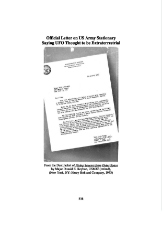
1533271299_2.jpg (154.5 KB, 1198x734, MUFON UFO Journal - 2005 0….jpg)

1533271299_3.jpg (130.7 KB, 1350x573, MUFON UFO Journal - 2005 0….jpg)

1533271299_4.jpg (30.5 KB, 284x300, 1949-05-15-The_Akron_Beaco….jpg)

>>163181
those tall blond ""aliens"" that speak german…
i remember some cases, one of a farmer that saw an ufo landing and went to spy what was happening and heard how they were speaking german..
those tall blond ""aliens"" that speak german…
i remember some cases, one of a farmer that saw an ufo landing and went to spy what was happening and heard how they were speaking german..
>>163188
The early years were fun:
>1913 (US) Jul. Badlands area, Montana - J. L. Buick & another prospector were startled by a small brown man saying “Peace be with you, my friends.” Sitting on a patch of sand was a silvery round object nearly 100 ft in diameter, with central dome & a small conning tower; no wheels underneath. Around it were other, small men in brown picking flowers, pebbles, etc., and some mining a rock outcrop. The occupant told the witnesses they were from another planet which had secretly been keeping tabs on earth for over a hundred years; they had learned English via spies working in a U.S. circus. The craft rose silently & then took off. Next day it came back, & they were given a tour inside 5 concentric saucers with diminishing air pressures, the outermost being evacuated. As to lift, “gravity is only a different type of magnetism”, so it can be controlled by an electromagnetic drive: they can do 9000 mph, and have artificial gravity insiside the saucer. Rockets, they,were told, had tailed for space travel. – HUMCAT_Index_1910-1939 (CUFOS) http://cufos.org/HUMCAT/
1954: http://www.thinkaboutitdocs.com/1954-october-ufo-alien-sightings/
The early years were fun:
>1913 (US) Jul. Badlands area, Montana - J. L. Buick & another prospector were startled by a small brown man saying “Peace be with you, my friends.” Sitting on a patch of sand was a silvery round object nearly 100 ft in diameter, with central dome & a small conning tower; no wheels underneath. Around it were other, small men in brown picking flowers, pebbles, etc., and some mining a rock outcrop. The occupant told the witnesses they were from another planet which had secretly been keeping tabs on earth for over a hundred years; they had learned English via spies working in a U.S. circus. The craft rose silently & then took off. Next day it came back, & they were given a tour inside 5 concentric saucers with diminishing air pressures, the outermost being evacuated. As to lift, “gravity is only a different type of magnetism”, so it can be controlled by an electromagnetic drive: they can do 9000 mph, and have artificial gravity insiside the saucer. Rockets, they,were told, had tailed for space travel. – HUMCAT_Index_1910-1939 (CUFOS) http://cufos.org/HUMCAT/
1954: http://www.thinkaboutitdocs.com/1954-october-ufo-alien-sightings/
>>163181
open the link..
search for the word "german"
http://www.nickpope.net/ufos-an-official-history.htm
open the link..
search for the word "german"
http://www.nickpope.net/ufos-an-official-history.htm
>>163190
yes , you will find this ones interesting, from the 1800s:
http://www.sacred-texts.com/ufo/timeline.htm
yes , you will find this ones interesting, from the 1800s:
http://www.sacred-texts.com/ufo/timeline.htm
>>163197
Indeed. Try this one (1896):
https://ufologie.patrickgross.org/airship/25nov1896-lodi-california.htm
But lets go all the way back:
>In A.D. 840, Agobard, Archbishop of Lyons, wrote of witnessing the execution of three men and one woman who had been captured when they left "ships that had come from the clouds." The strangers had been apprehended as they were trading for food with local peasants Church officials kept the aliens in chains for three days before they allowed the populace to stone them as demons. – Metting Aliens by Brad Steiger (1978)
>[13th Century] Cloena Borough .. at church hearing mass, an anchor was dropped from the sky as if thrown from a ship, for a rope was attached to it, and one of the flukes of the anchor became caught in the arch above the door. .. They saw a ship with men aboard floating before the anchor cable, and they saw a man leap overboard and dive down to the anchor as it to release it. When he came down to the anchor he tried to loosen it, but the people rushed up and seized him. The Bishop was present when this occurred and forbade his people to hold the man, for he said it might prove fatal as when one is held under water. As soon as the‘l man was released he hurried up to the ship; when he was up, the crew cut the rope and the ship sailed away out of sight. – Metting Aliens by Brad Steiger (1978) ← Albert B. Holland appeared in the March 1958 issue of Fate ← King’s Mirror (old Norse, 13th Century).
>[1207] In Otto Imperiaiia, Book One, Chapter Eighteen,. Gervase of Tilbury writes of an aerial ship which caught its “anchor” in a pile of stones near the city of Bristol around A.D. 1207. When an occupant emerged from the ship to free it, he found himself immediately surrounded by curious citizens. Although the visitor accomplished his task, he seemed suddenly to become asphyxiated by the atmospherc and fell, dying and gasping, to the ground. – Metting Aliens by Brad Steiger (1978)
Alien ships with anchors.
Indeed. Try this one (1896):
https://ufologie.patrickgross.org/airship/25nov1896-lodi-california.htm
But lets go all the way back:
>In A.D. 840, Agobard, Archbishop of Lyons, wrote of witnessing the execution of three men and one woman who had been captured when they left "ships that had come from the clouds." The strangers had been apprehended as they were trading for food with local peasants Church officials kept the aliens in chains for three days before they allowed the populace to stone them as demons. – Metting Aliens by Brad Steiger (1978)
>[13th Century] Cloena Borough .. at church hearing mass, an anchor was dropped from the sky as if thrown from a ship, for a rope was attached to it, and one of the flukes of the anchor became caught in the arch above the door. .. They saw a ship with men aboard floating before the anchor cable, and they saw a man leap overboard and dive down to the anchor as it to release it. When he came down to the anchor he tried to loosen it, but the people rushed up and seized him. The Bishop was present when this occurred and forbade his people to hold the man, for he said it might prove fatal as when one is held under water. As soon as the‘l man was released he hurried up to the ship; when he was up, the crew cut the rope and the ship sailed away out of sight. – Metting Aliens by Brad Steiger (1978) ← Albert B. Holland appeared in the March 1958 issue of Fate ← King’s Mirror (old Norse, 13th Century).
>[1207] In Otto Imperiaiia, Book One, Chapter Eighteen,. Gervase of Tilbury writes of an aerial ship which caught its “anchor” in a pile of stones near the city of Bristol around A.D. 1207. When an occupant emerged from the ship to free it, he found himself immediately surrounded by curious citizens. Although the visitor accomplished his task, he seemed suddenly to become asphyxiated by the atmospherc and fell, dying and gasping, to the ground. – Metting Aliens by Brad Steiger (1978)
Alien ships with anchors.
>>163210
Anchors and ropes…
>Mar. 26, 1897 Sioux City (Iowa) night. Approximate date. Robert Hibtbard was caught by an anchor dropped from an un-known flying machine 22 km north of the town. He was dragged over 10 m and fell as his clothes were torn. (FSR 66, 4)
>Apr. 23, 1897 McKinney Bayou (Arkansas). Judge Lawrence A. Byrne of Texarkana, Arkansas, was surveying a tract of land when he saw a peculiar object anchored on the ground. "It was manned by three men who spoke a foreign language, but judging from their looks one would take them to be Japs." (Farish, in Allende Letters (Award Special, 1968) )
>Apr. 25, 1897 Merkel (Texas), evening. People returning from church observed a heavy object being dragged along the ground by a rope attached to a flying craft. The rope got caught in a railroad track. The craft was too high for its structure to be visible but protrusions and a light could be distinguished. After about 10 min a man came down along the rope cut the end free, and went back aboard the craft, which flew away toward the northeast. The man was small and dressed in a light-blue uniform. (194; Magonia)
>Apr. 19, 1897, 22:30 Leroy (Kansas). Alexander Hamilton was awakened by a noise among the cattle and went out with his son and his tenant. They saw an elongated cigar-shaped object, about 100 m long with a transparent cabin underneath showing narrow reddish bands, hovering 10 m above ground. They approached within 50 m of it. It was illuminated and equipped with a searchlight. Inside it were "six of the strangest beings" the witness had seen, also described as "hideous." They spoke a language no witness could understand. A cow was dragged away by the object with the help of a strong red cable; it was found butchered in a field the next day. (Anatomy 16; Magonia)
Anchors and ropes…
>Mar. 26, 1897 Sioux City (Iowa) night. Approximate date. Robert Hibtbard was caught by an anchor dropped from an un-known flying machine 22 km north of the town. He was dragged over 10 m and fell as his clothes were torn. (FSR 66, 4)
>Apr. 23, 1897 McKinney Bayou (Arkansas). Judge Lawrence A. Byrne of Texarkana, Arkansas, was surveying a tract of land when he saw a peculiar object anchored on the ground. "It was manned by three men who spoke a foreign language, but judging from their looks one would take them to be Japs." (Farish, in Allende Letters (Award Special, 1968) )
>Apr. 25, 1897 Merkel (Texas), evening. People returning from church observed a heavy object being dragged along the ground by a rope attached to a flying craft. The rope got caught in a railroad track. The craft was too high for its structure to be visible but protrusions and a light could be distinguished. After about 10 min a man came down along the rope cut the end free, and went back aboard the craft, which flew away toward the northeast. The man was small and dressed in a light-blue uniform. (194; Magonia)
>Apr. 19, 1897, 22:30 Leroy (Kansas). Alexander Hamilton was awakened by a noise among the cattle and went out with his son and his tenant. They saw an elongated cigar-shaped object, about 100 m long with a transparent cabin underneath showing narrow reddish bands, hovering 10 m above ground. They approached within 50 m of it. It was illuminated and equipped with a searchlight. Inside it were "six of the strangest beings" the witness had seen, also described as "hideous." They spoke a language no witness could understand. A cow was dragged away by the object with the help of a strong red cable; it was found butchered in a field the next day. (Anatomy 16; Magonia)
>>163212
i will continue reading and posting in your UFO thread.
And coming back to the blood type subject in this thread ou will like to read this:
http://www.sacred-texts.com/ufo/naziufo.htm
i will continue reading and posting in your UFO thread.
And coming back to the blood type subject in this thread ou will like to read this:
http://www.sacred-texts.com/ufo/naziufo.htm
>>163326
>The CREATION OF AN ATOMIC LOW-PRESSURE ZONE, which DEVELOPS IN SECONDS when either AIR or WATER IS CAUSED TO MOVE RADIALLY AND AXIALLY under conditions of a FALLING TEMPERATURE GRADIENT."
Sounds a bit Tesla turbine-ish. >>>/vx/65829 → Also sounds like >>163190
>5 concentric saucers with diminishing air pressures, the outermost being evacuated.
Which also sounds like:
>>>/vx/65834 →
>The CREATION OF AN ATOMIC LOW-PRESSURE ZONE, which DEVELOPS IN SECONDS when either AIR or WATER IS CAUSED TO MOVE RADIALLY AND AXIALLY under conditions of a FALLING TEMPERATURE GRADIENT."
Sounds a bit Tesla turbine-ish. >>>/vx/65829 → Also sounds like >>163190
>5 concentric saucers with diminishing air pressures, the outermost being evacuated.
Which also sounds like:
>>>/vx/65834 →
1533449609_1.png (352.2 KB, 1500x1300, Vril Pony (Colored Form).png)

>>163703
Very nice. U have the pegasus, the black sun, space, the oroboros, the chevron, the badge, of course the Vril symbol. Its missing something desu, but its solid regardless.
Very nice. U have the pegasus, the black sun, space, the oroboros, the chevron, the badge, of course the Vril symbol. Its missing something desu, but its solid regardless.
>>163720
you should consider making a wrongthink account to post all your material and PDFs etc. so they stay archived. it would be nice to read your stuff there. Good night!
you should consider making a wrongthink account to post all your material and PDFs etc. so they stay archived. it would be nice to read your stuff there. Good night!
ariosophy and esoteric studies were very interesting and many of those esoterist were from around 1880
https://de.metapedia.org/wiki/Gorsleben,_Rudolf_John
https://de.metapedia.org/wiki/Gorsleben,_Rudolf_John
In 1905, he published his book Theozoölogie oder die Kunde von den Sodoms-Äfflingen und dem Götter-Elektron[2] (Theozoology, or the Science of the Sodomite-Apelings and the Divine Electron) in which he advocated sterilization of the sick and the "lower races" as well as forced labour for "castrated chandals", and glorified the "Aryan race" as "Gottmenschen" ("god-men"). Lanz justified his esoteric racial ideology by attempting to give it a Biblical foundation; according to him, Eve, whom he described as initially being divine, involved herself with a demon and gave birth to the "lower races" in the process. Furthermore, he claimed that this led to blonde women being attracted primarily to "dark men", something that only could be stopped by "racial demixing" so that the "Aryan-Christian master humans" could "once again rule the dark-skinned beastmen" and ultimately achieve divinity. A copy of this book was sent to Swedish poet August Strindberg, from whom Lanz received an enthusiastic reply in which he was described as a "prophetic voice
https://en.wikipedia.org/wiki/J%C3%B6rg_Lanz_von_Liebenfels
https://en.wikipedia.org/wiki/J%C3%B6rg_Lanz_von_Liebenfels
141 replies | 65 files | 1 UUIDs | Archived
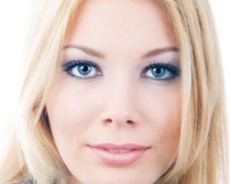
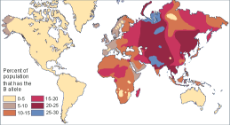








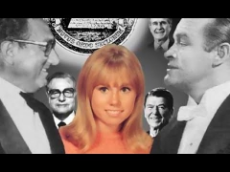

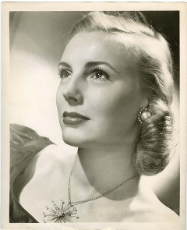






















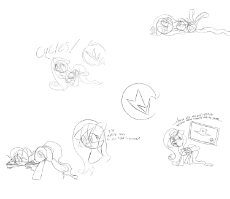

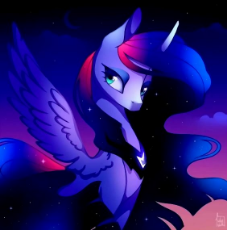






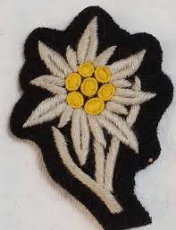




 Ex: Type :littlepip: to add Littlepip
Ex: Type :littlepip: to add Littlepip  Ex: Type :eqg-rarity: to add EqG Rarity
Ex: Type :eqg-rarity: to add EqG Rarity 